
Great tour, great people. Thanks a lot it was a pleasure guiding you
Ursula and Tony
Day 11: Etretat - Versailles
Our last riding day and it's time to head back to Versailles. After a fast run on the motorway we stop in Rouen, home to one of the most spectacular cathedrals in France. From here we head on Giverny, where we visit the incredibly beautiful gardens of Claude Money that served as inspiration for some of his most famous paintings. The last few miles take us back to Versailles and the end of our tour.
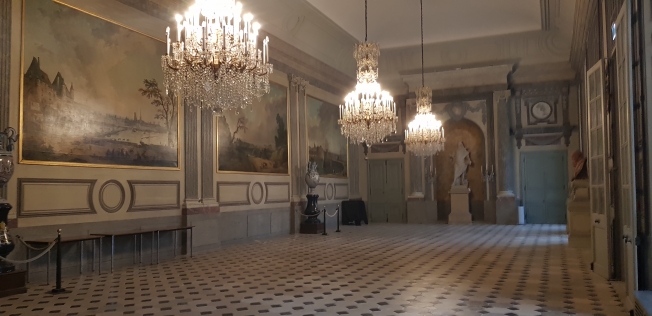
The beautiful chambers inside the archbishop's Palace in Rouen.
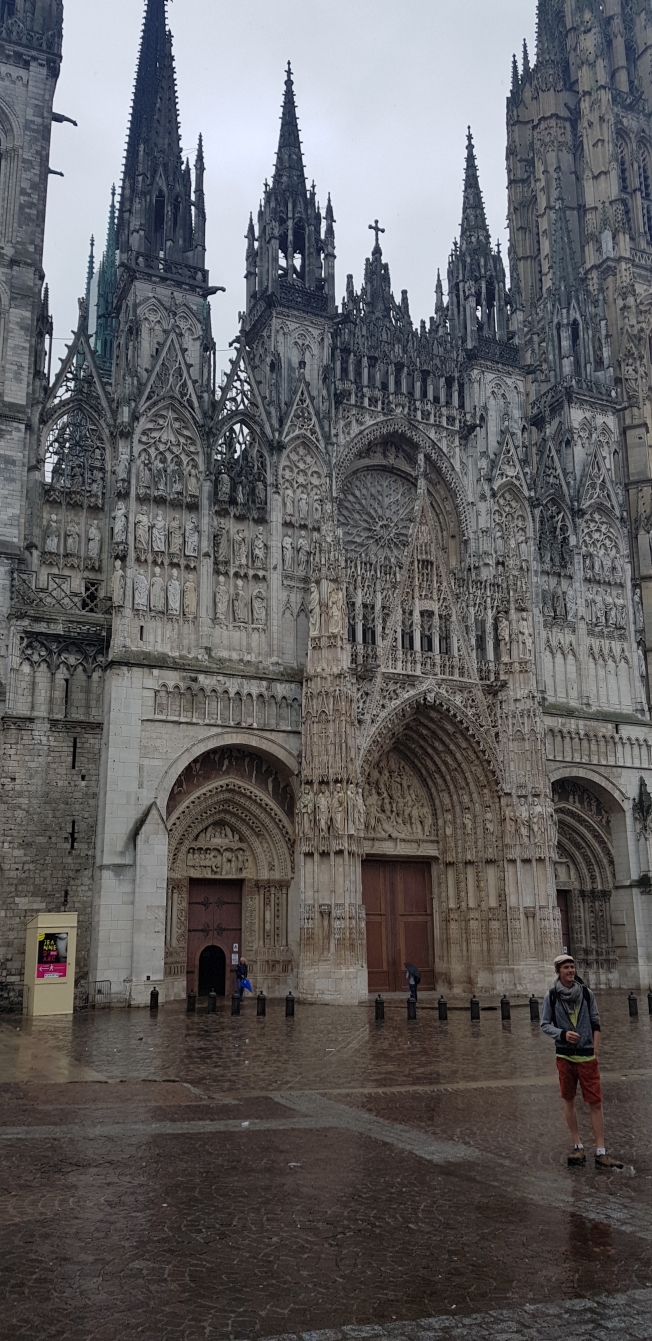
The cathedral of Rouen is just to big to be photographed as a whole.
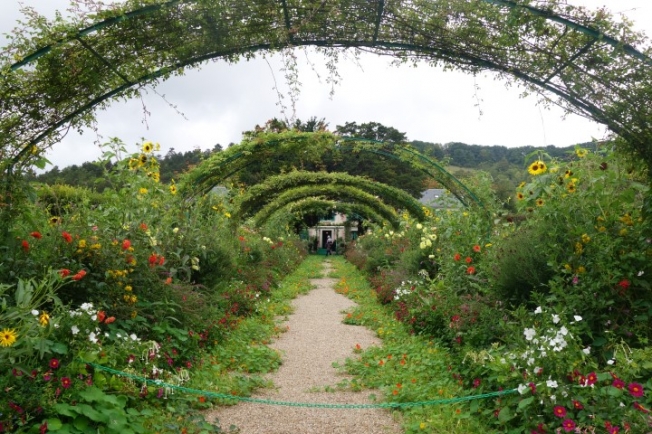
Monet`s garden in Giverny
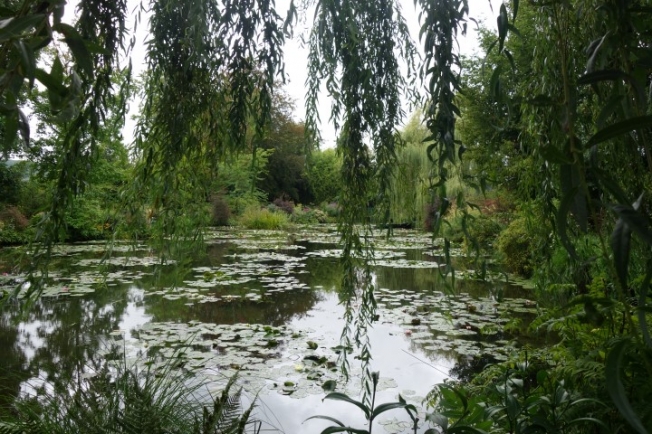
and the famous pond with the water lilies
Day 10: Bayeux - Etretat
We leave Bayeux behind and head further east. The Café Gondrée was the first building to be liberated on D-Day, the place is loaded with history and absolutely worth a stop. Honfleur, a small town situated close to the mouth of the Seine, escaped the war undamaged, in fact it has not been involved in any fighting for hundreds of years, so the little port and the narrow houses around it you can see today are almost unbearably picturesque.
Next we cross the Pont de Normandie, a suspension bridge that elegantly swings across the river Seine. At the time it was opened in 1995 it was the longest bridge of that kind in the world (almost 2,2 km) and one of the highest (piers 203 meters tall). Past Le Havre, a city completely wiped out in WWII, we approach the Alabaster Coast and Étretat, a small town framed by tall, snow-white cliffs.
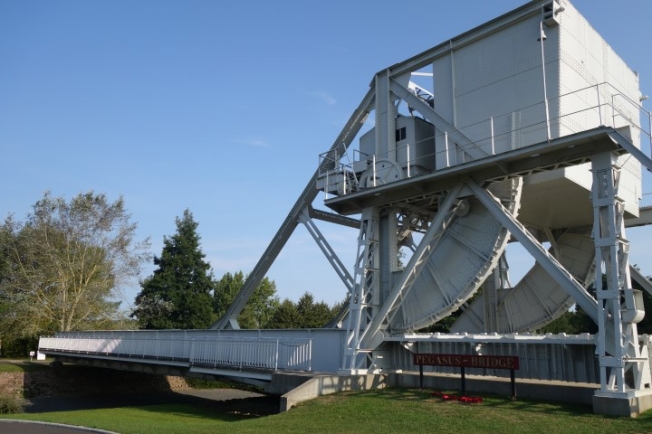
the Pegasus Bridge Memorial - absolutely a highlight
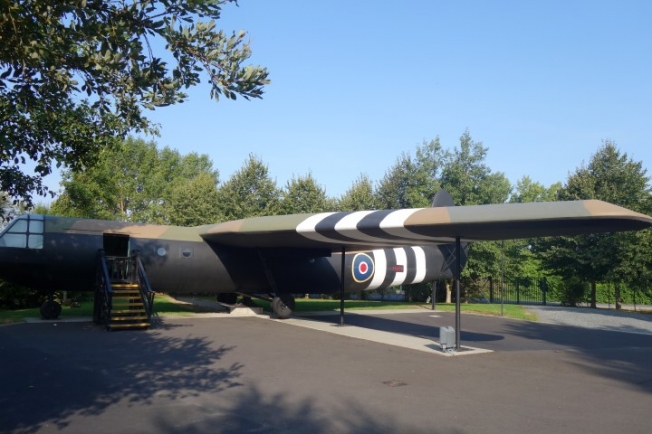
these massive gliders
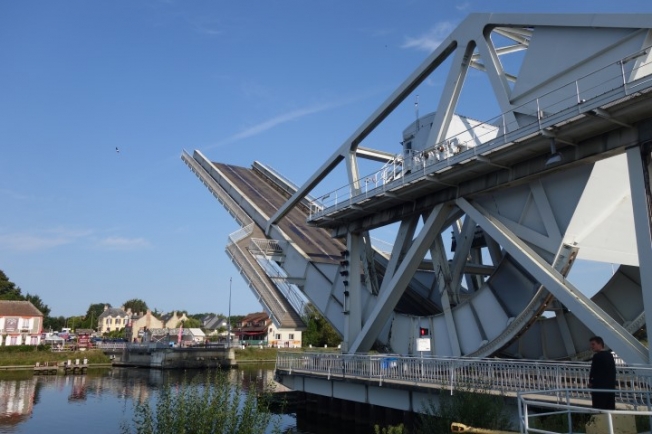
the new bridge
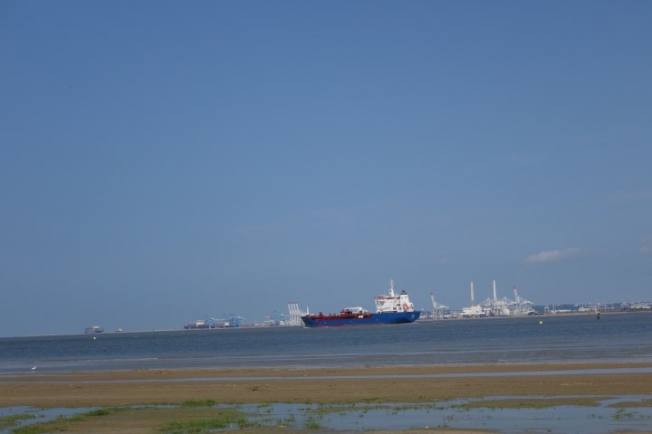

Honfleur - famous artists like Boudin, Cézanne and Renoir liked it too and lived here for a while, back in the 19th century.
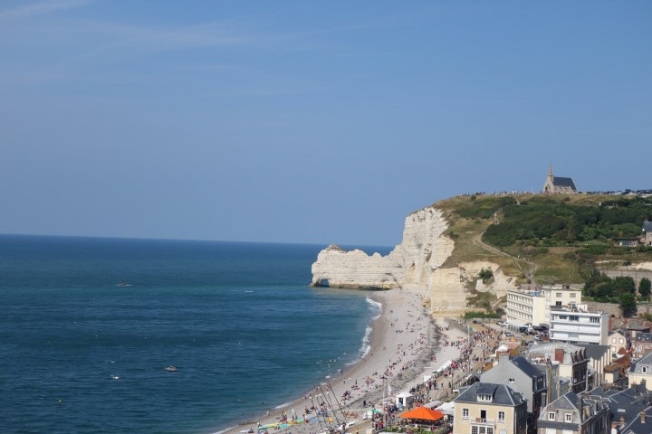
Etretat a picturesque village at the Alabaster coast and our home for tonight. This is the view from the bar at the " ormy House"
ormy House" 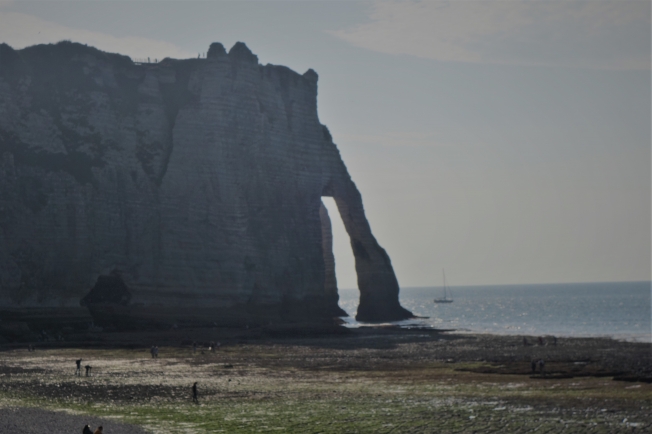
the famous rock of Etretat
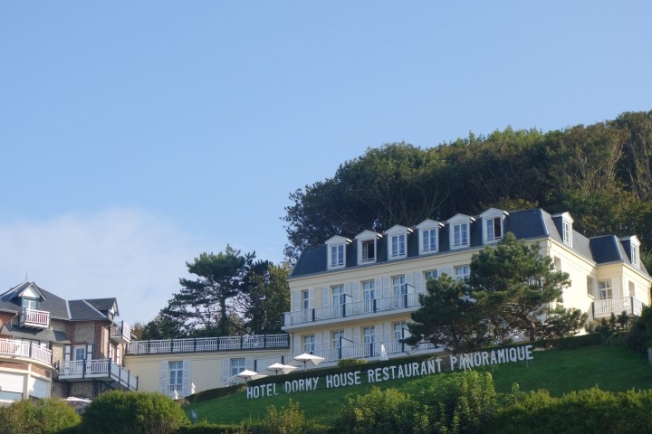
Dormy House

Day 9: Rest Day in Bayeux
This rest day is dedicated to the liberation of Europe that started here in the summer of 1944. There are countless monuments, museums, cemeteries, battlefields, viewpoints and historic sites of all kinds along this stretch of coastline. You could spend a week of sightseeing around here and still not see everything. Our ride today focuses on some of the most imporant locations like the Pointe du Hoc, the American War Cemetery.Of course we`ll stop at Omaha Beach
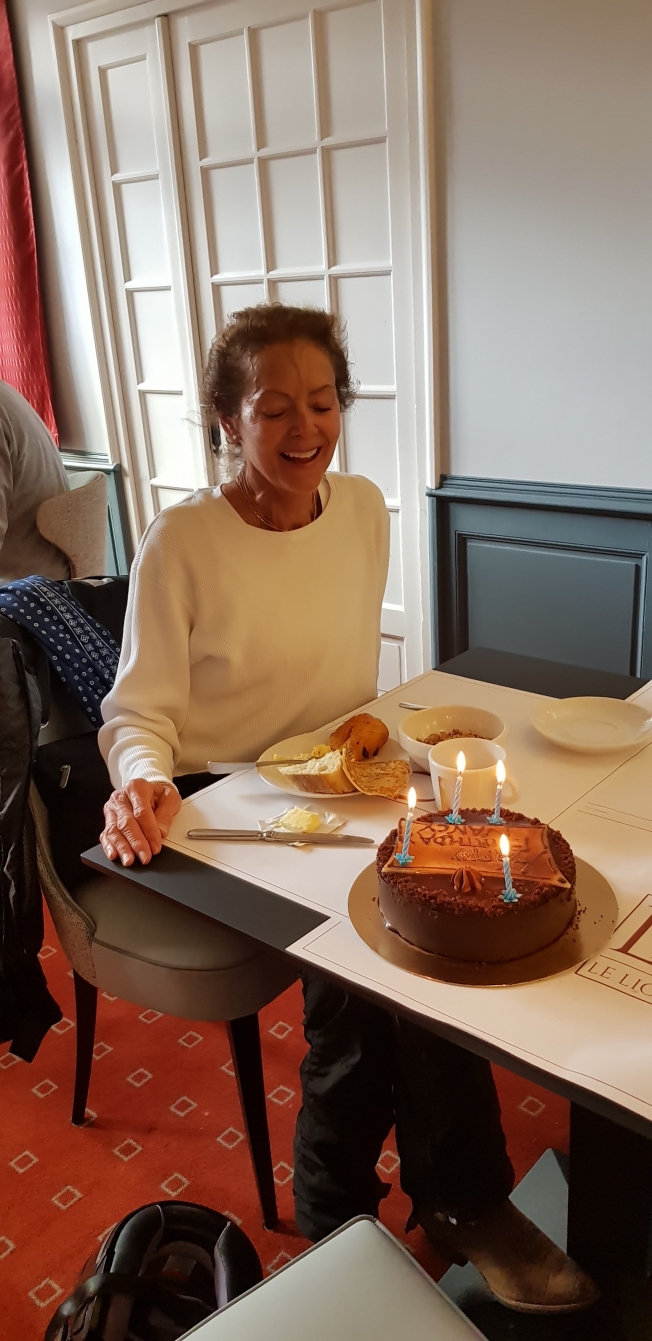
Happy birthday Nancy!
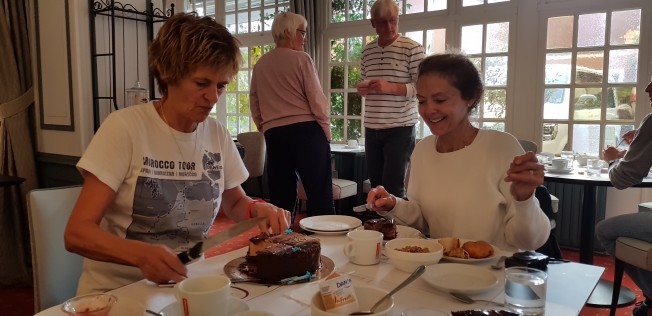
Cake, it's what's for breakfast!
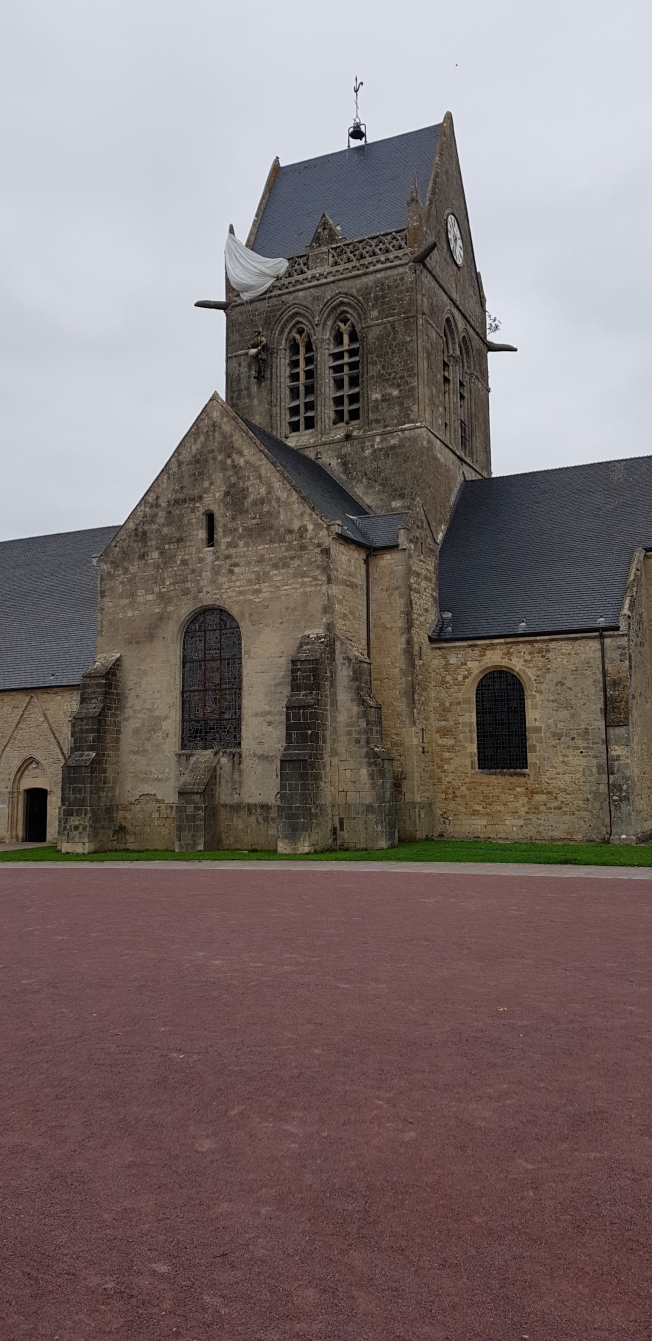
The church of Sainte-Mère-Église, the first town to be liberated on D-Day.
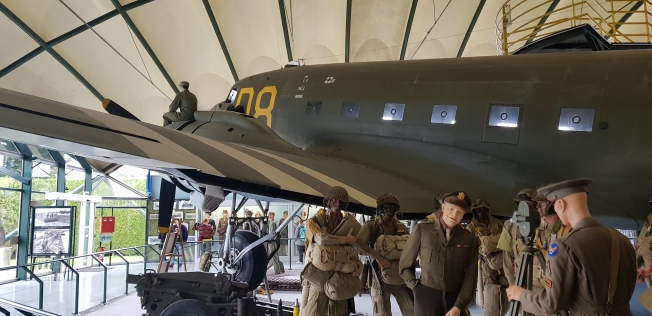
the Museum of the Glider Airborne Division
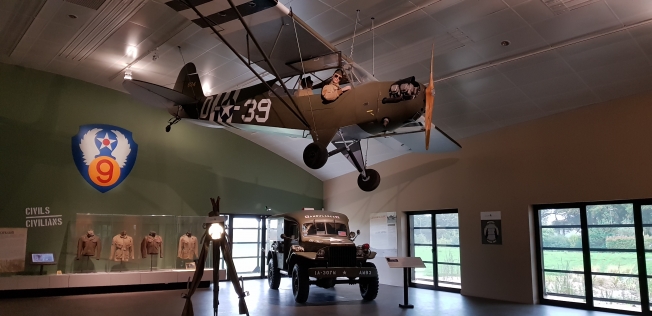
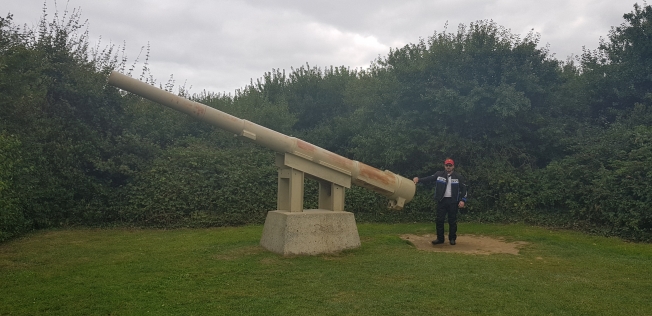
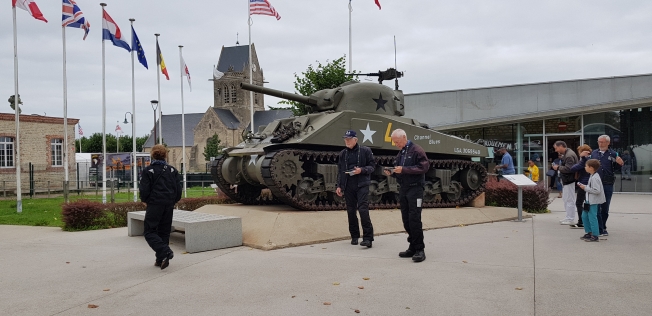
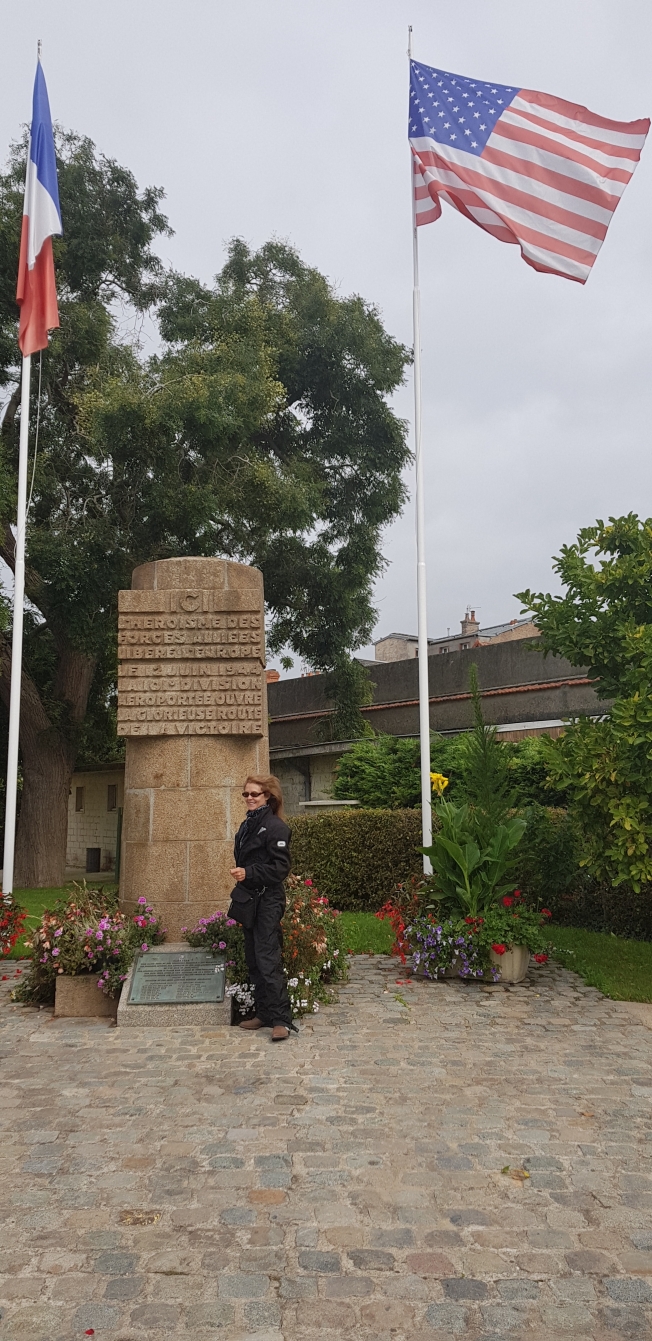
we did a little detour - and Nancy found her father`s division
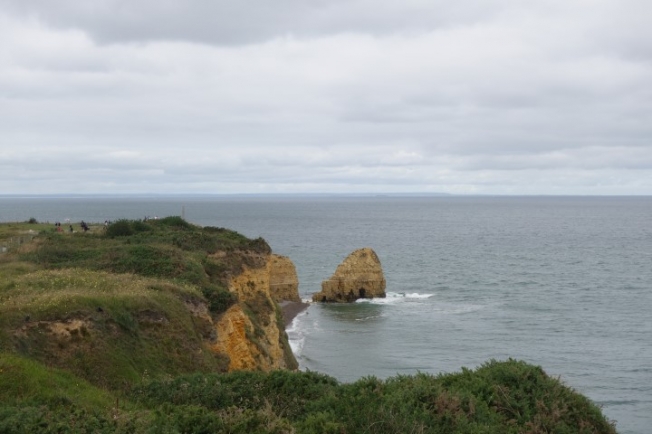
Pointe du Hoc
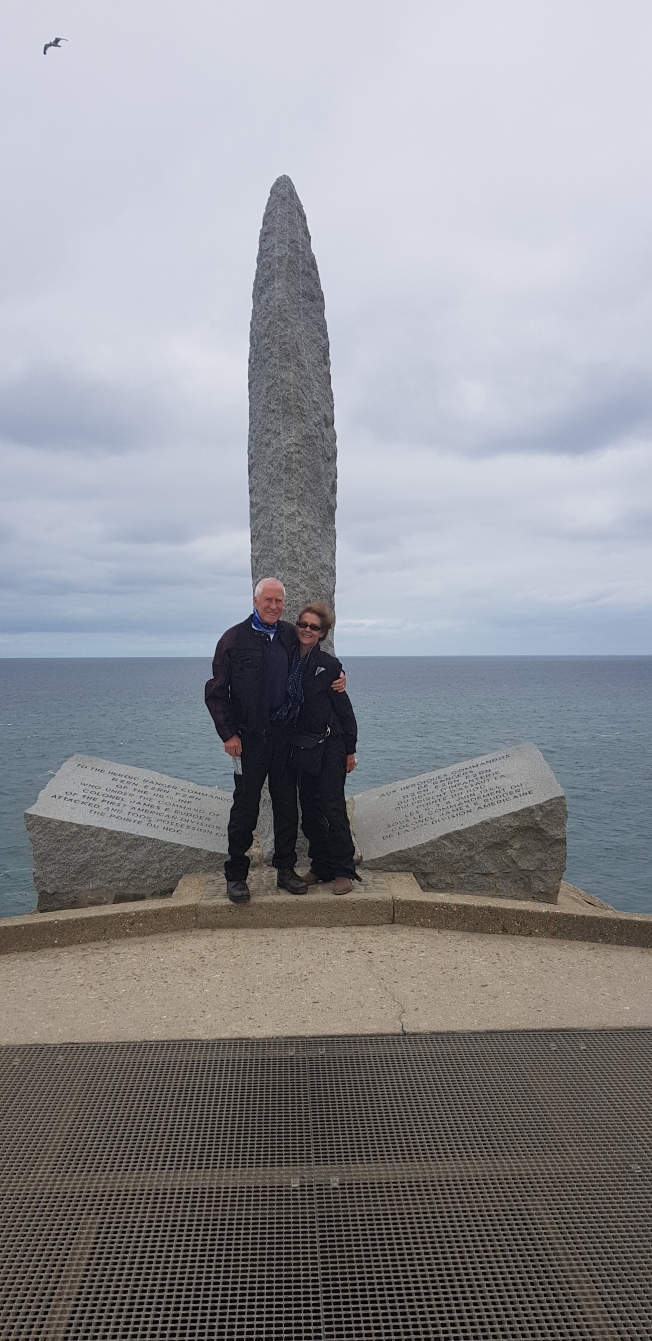
the Ranger memorial
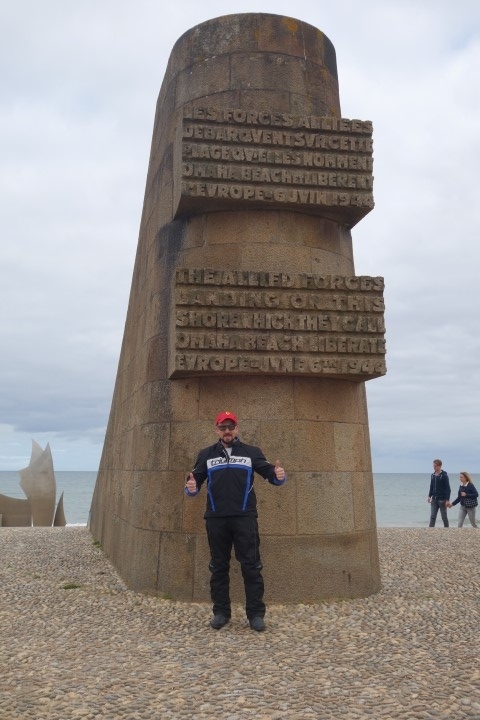
Sergio and the D-Day Monument
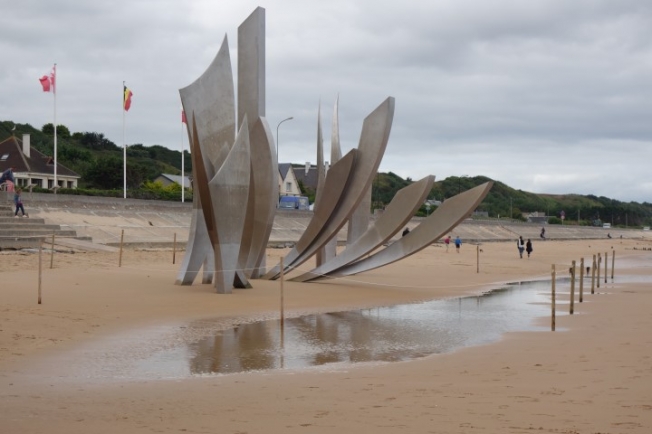
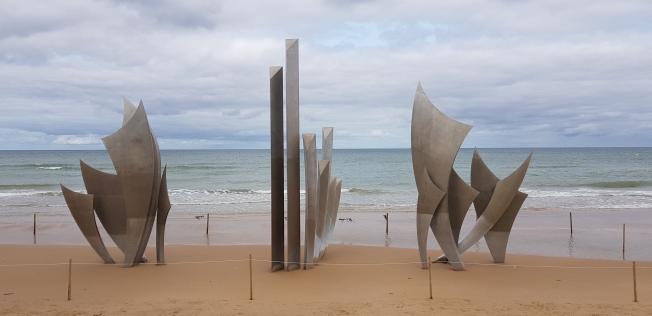
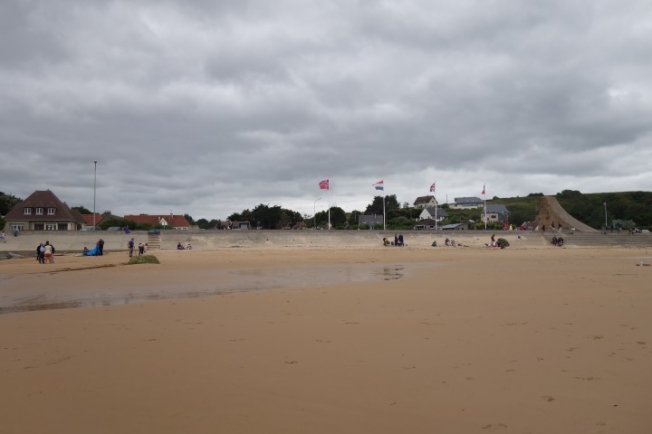
Omaha Beach
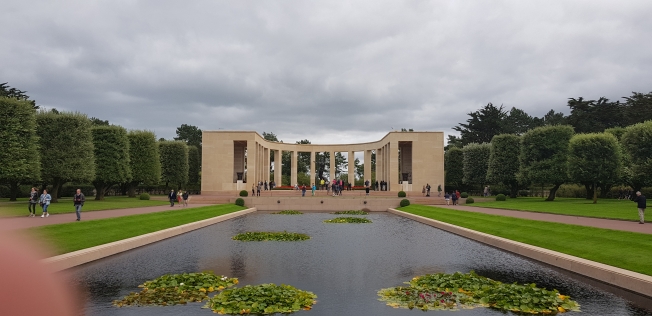

Amerian War Cementery
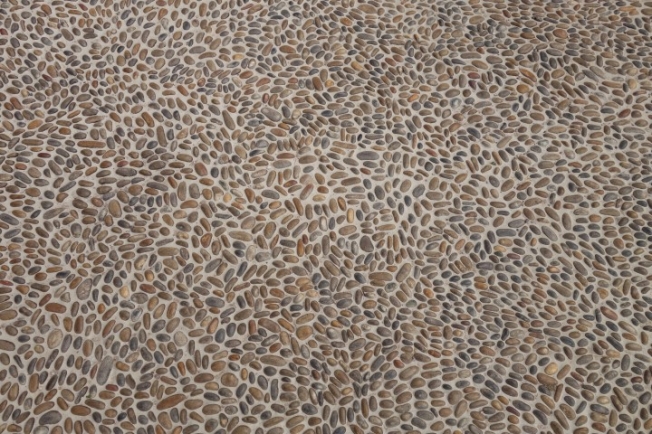
pebble stones from Omaha Beach comemmorateing the dead soldiers
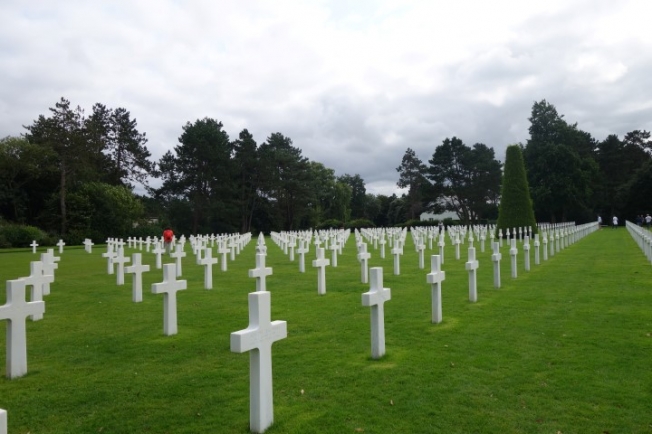
9.387 crosses or David stars of white Italian marble, including 33 pairs of brothers who are buried side-by-side. Only 40 % of the American deads from the fighting in the Normandy are buried here – the rest were repatriated at the request of their families.
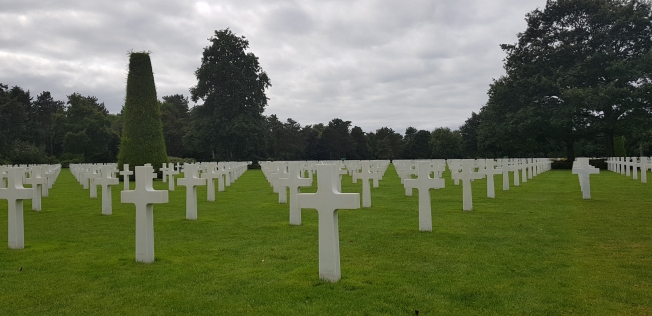
every cross or David star shows the military grade, the division, the name, the state,the date when they died, no age.
Day 8: Saint Malo - Bayeux
Today is all about one of Frances' most iconic towns. Mont-Saint-Michel is a must-see on any trip to France. Two avoid the tourist traffic we get in early and have the town almost to ourselves. A stroll through the abby is an almost enlightening experience, only topped by the fantastic views of the surrounding bay. As the town begins to fill up we beat our retreat and head to Bayeux, our stop for the next two nights and home of the world-famous tapestry.

short morning photoshooting.... because you know pictures stay for ever 
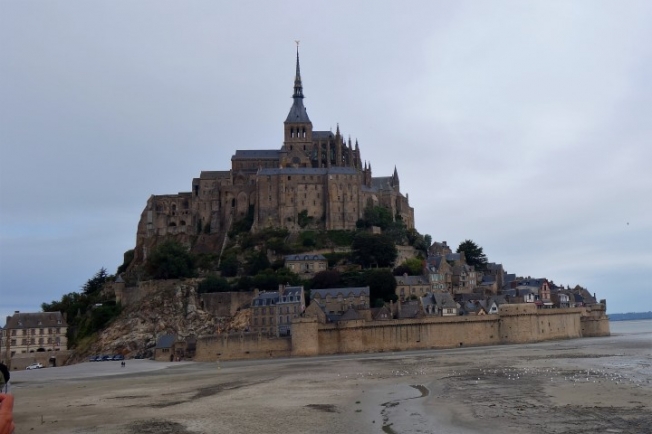
Mont St. Michel - the first wow

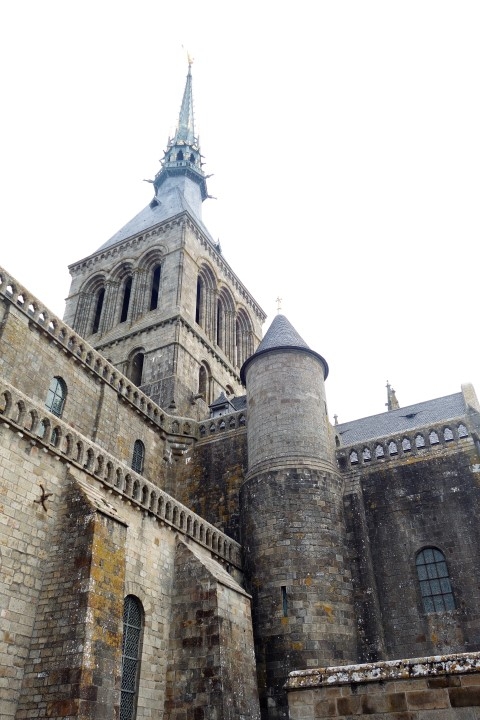

that`s how it all started in 708
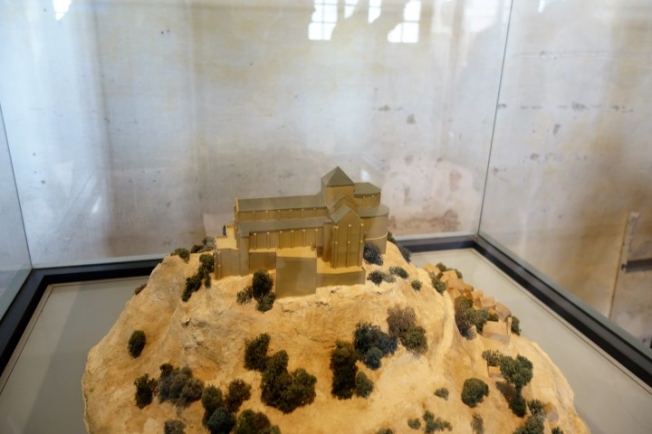
200years later
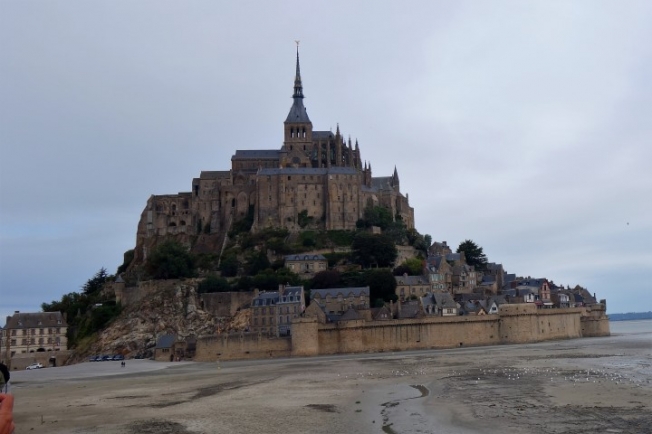
....and today
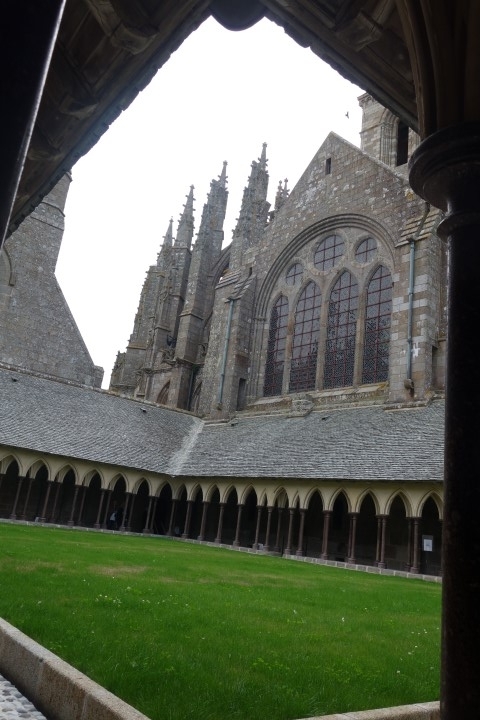
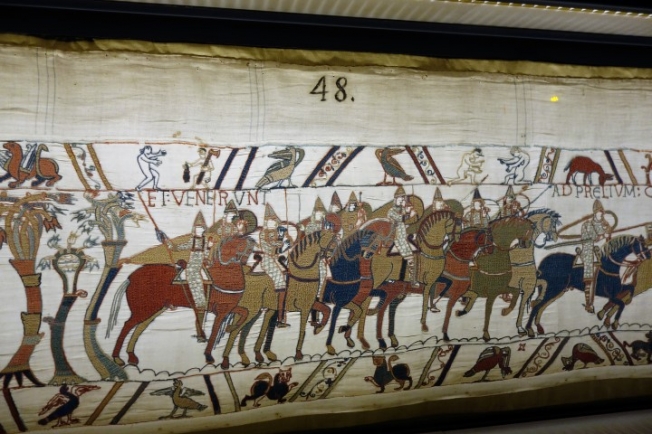
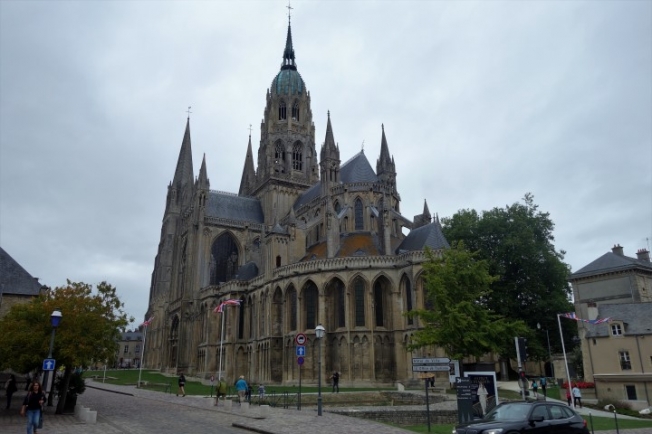
Day 7: Roscoff - St. Malo
It's another beautiful riding day in Brittany. Leaving Roscoff behind we swing East and head along the stunning coastline, full of spectacular cliffs and hidden shoreline hamlets. After an excellent lunch of Galletes and Crepes we reach the northernmost point of Brittany at Cap Frehel, then head into Saint Malo, just in time to take a strall through the beautiful walled city before dinner in an old-school French seaside bistrot.

The famous "House in the Rocks". Why build four walls if you can get away with two?

This stunning coast sees tides of up to 12m

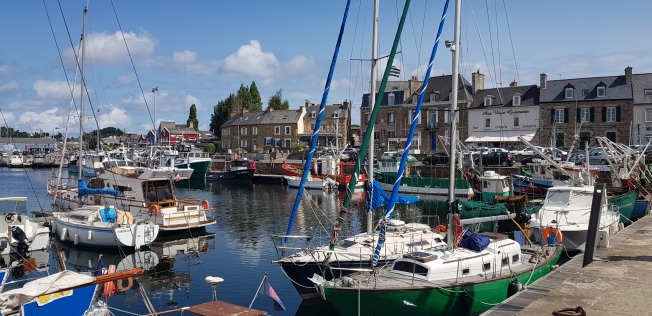
The harbour in Pampiol is an excellent place for lunch!
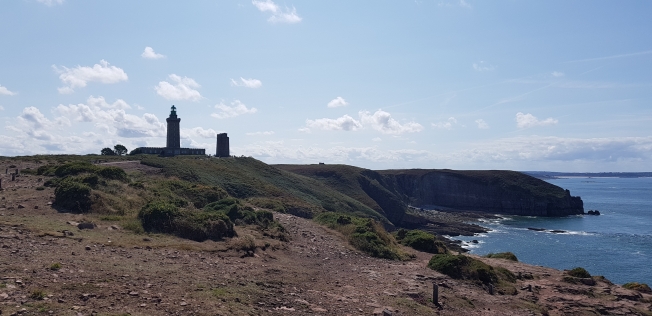
Cap Frehel with its two famous lighthouses.
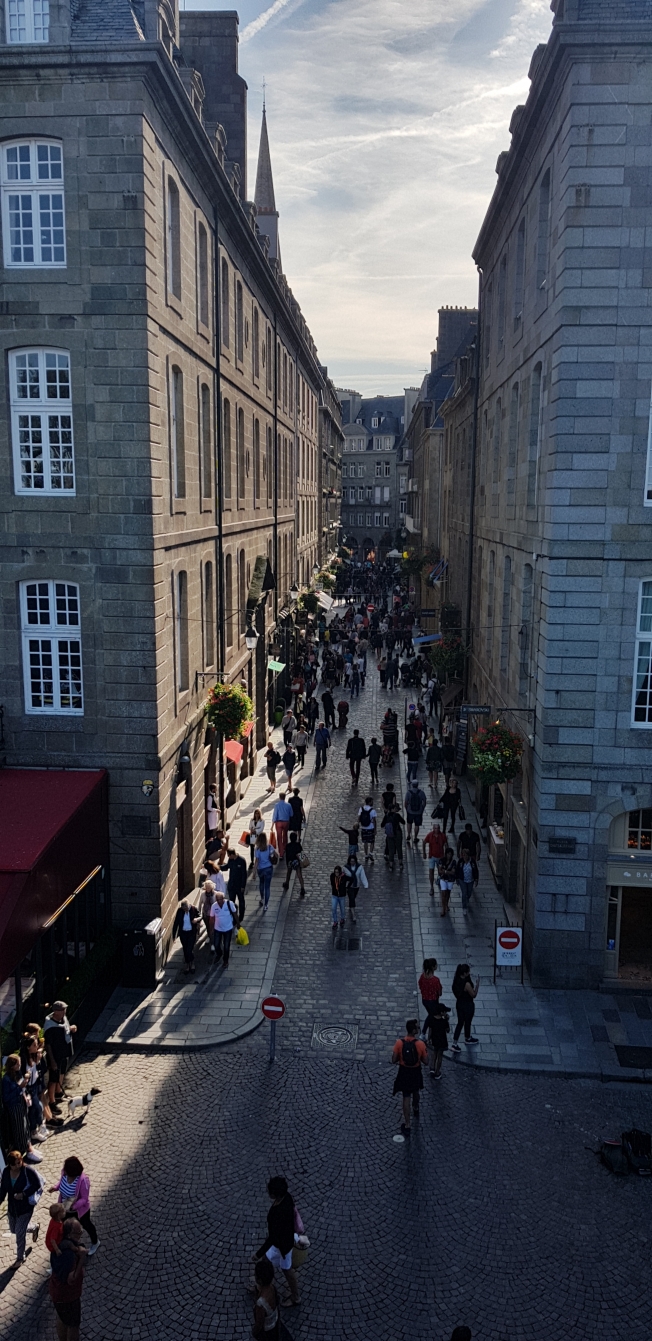
Saint Malo, a delightfully bustling seaside town full of restaurants, bars and shops.
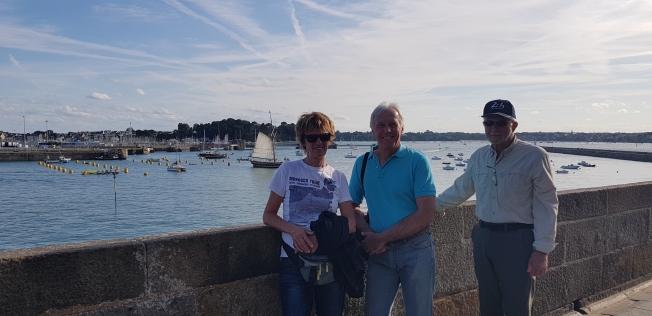
Ursula, Bob and Wayne, high up on the town walls overlooking Saint Malos' beautiful harbour.
Day 6: Carnac - Roscoff
The southern coast of Brittany is called Morbihan, which means "small sea" in Breton. We follow it to Pont Aven, a picturesque little town made famous by Paul Gauguin and his artist friends. Past Quimper, the lively capital of the Département, we reach the westernmost point of our tour and also one of the highest points of Brittany, a "mountain" named Ménez-Hom. From here we head inland again and then towards the northern coast.
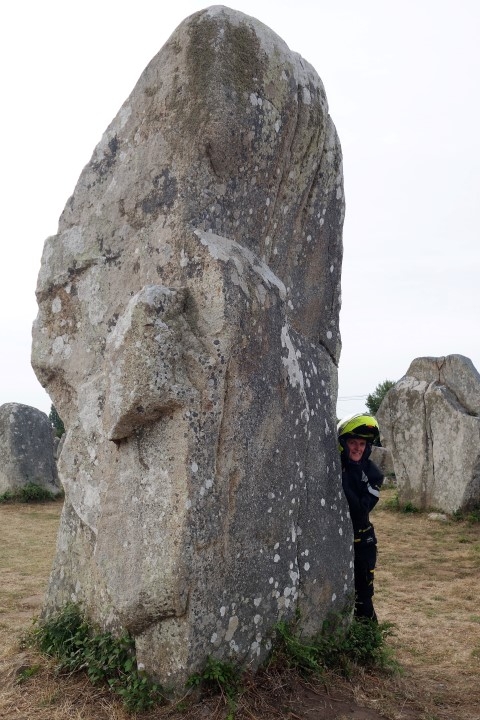
some more Megaliths for those who missed it yesterday
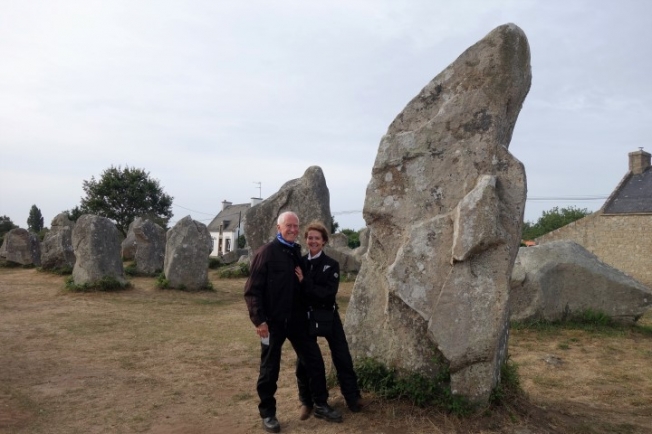
our lovely couple Tully and Nancy
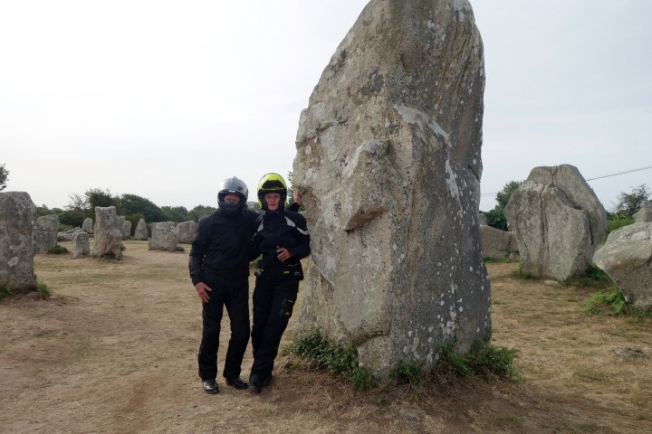
Wayne and Ursula
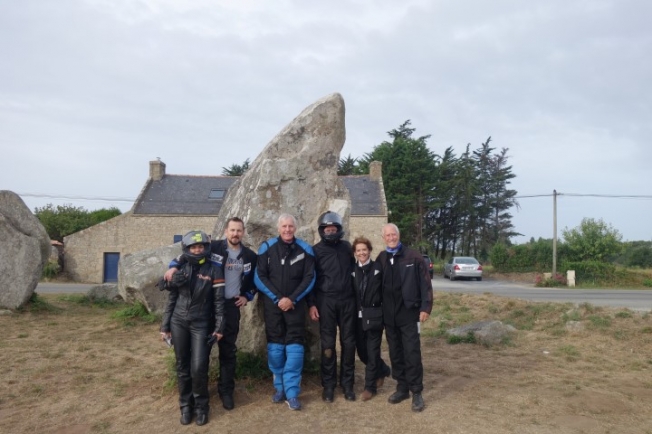
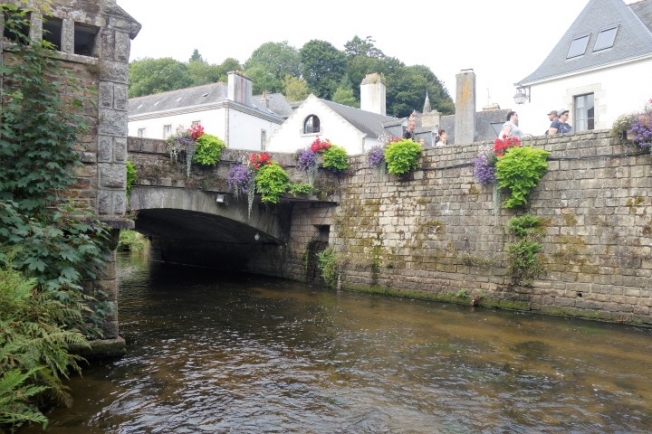
Pont d`Aven - the hang out of Gauguin and his artist friends

What a picnic spot - Ste. Anne la-Palud
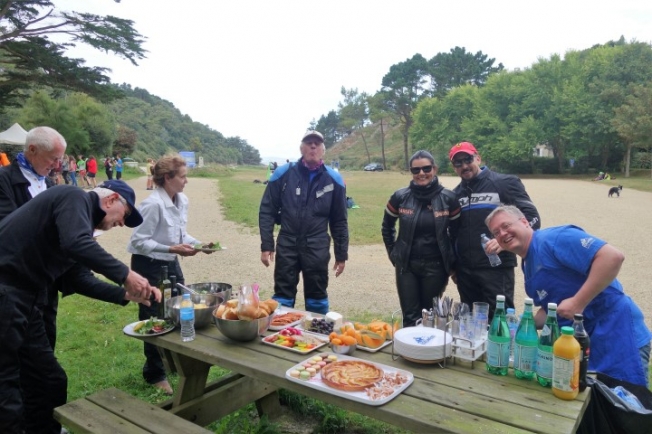
and what a Chef
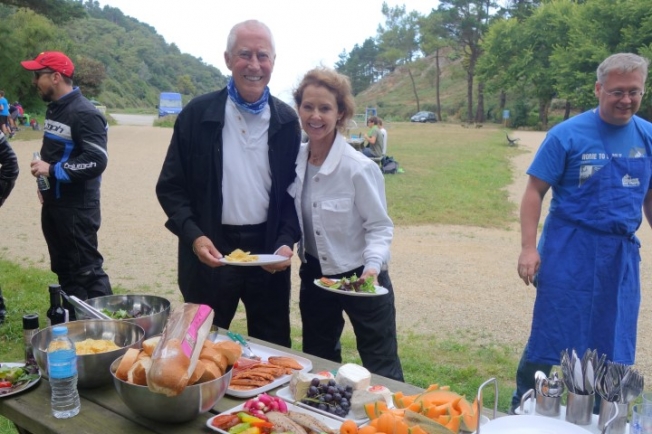
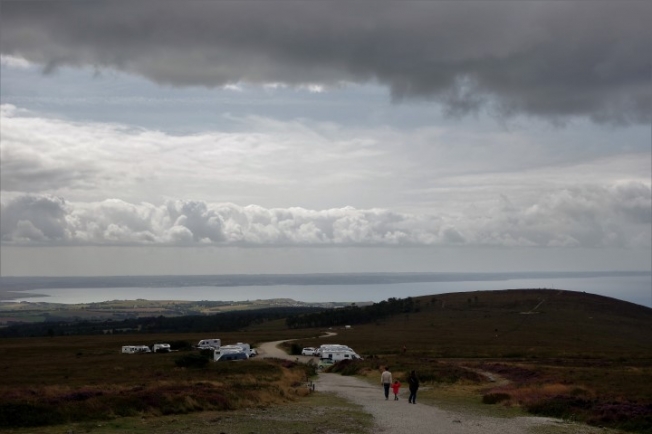
Menéz-Hom offers a wide view into Brittany

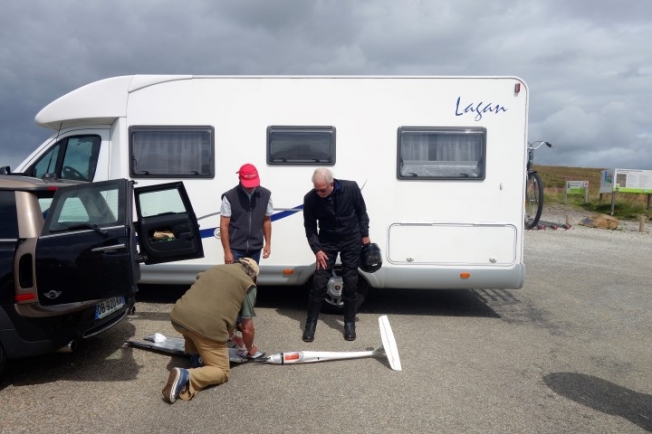
our gear-head in his element
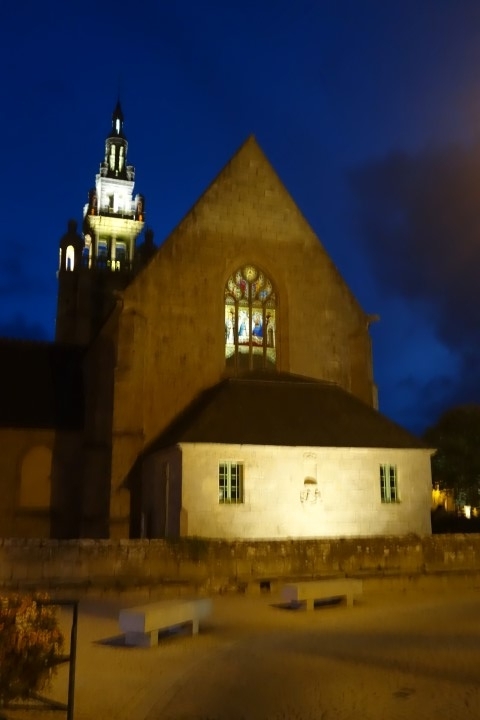
Lovely Roscoff at night
Day 5: Rest Day in Carnac
It is time for a well deserved break! And what better place to have one than in the charming seaside town of Carnac on the Atlantic Coast. Slighty overcast skies give way to sunshine as the morning progresses and we head out into the back country of Brittany. Riding past stoneage burial mounds and ancient menhirs is an experience unlike anything else found in Europe! We end the day in true coastal style, with a mountain of seafood!
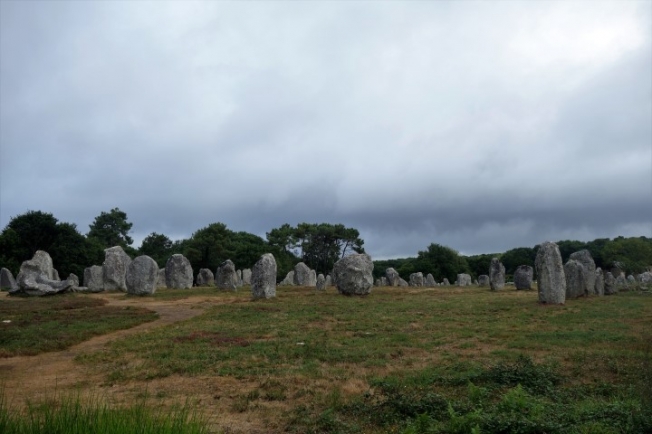
the Menhirs - why they are there and what for is quite unclear. There are no fewer than 3000 of these upright stones erected between 5000 and 3500 BC. They are predating Stonehenge by about 100 years

Carlo and Sergio

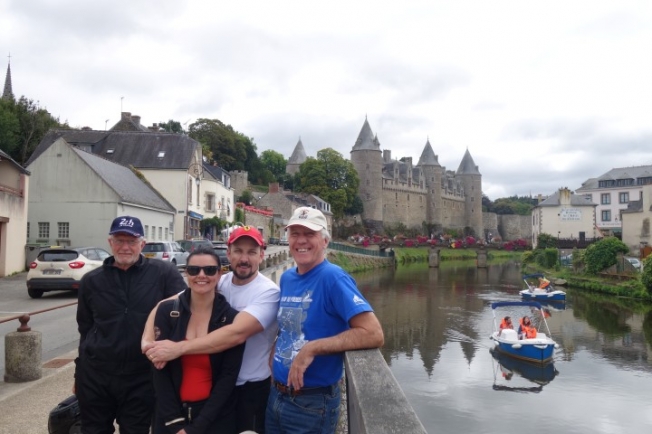
Josselin is a must-visit on any tour of the Breton heartlands. The impressive medieval castle is overlooking the Oust Valley and home of the Rohan famliy.
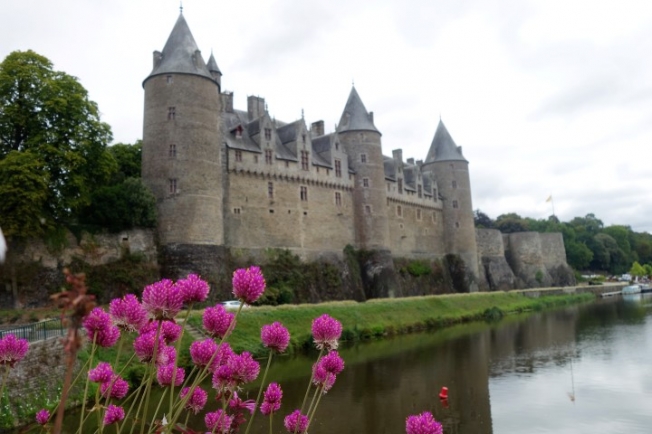
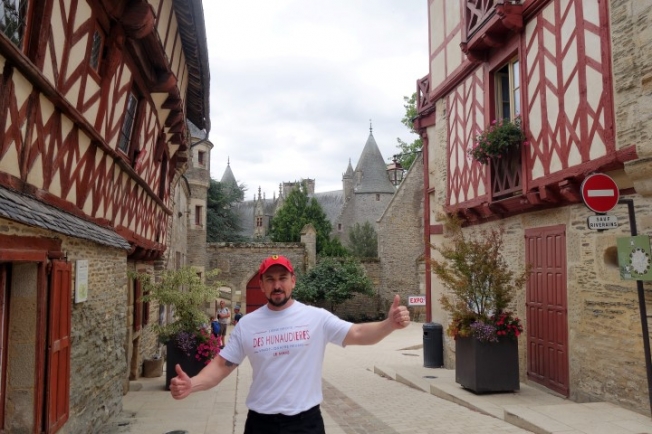
the hero
Day 4: Angers to Carnac
It's a beautiful sunny morning in France as we set out for our last day in the Loire Valley. Riding through rolling farmland we make our way to Saint Nazaire, where we visit the incredibly impressive submarine pens before wolfing down some excellent seafood at a harbour restaurant. Our next stop is at the salt flats of Guerande, home of the famous Fleur de Sel. With the afternoon sun high above we finally make it to Carnac, a charming little seaside town and our home for the next two nights .

this building is not exactly beautiful! It consist of almost half a million cubic meters of reenforced concrete. It was Hittlers submarine garage during WWII and part of the Atlantic wall

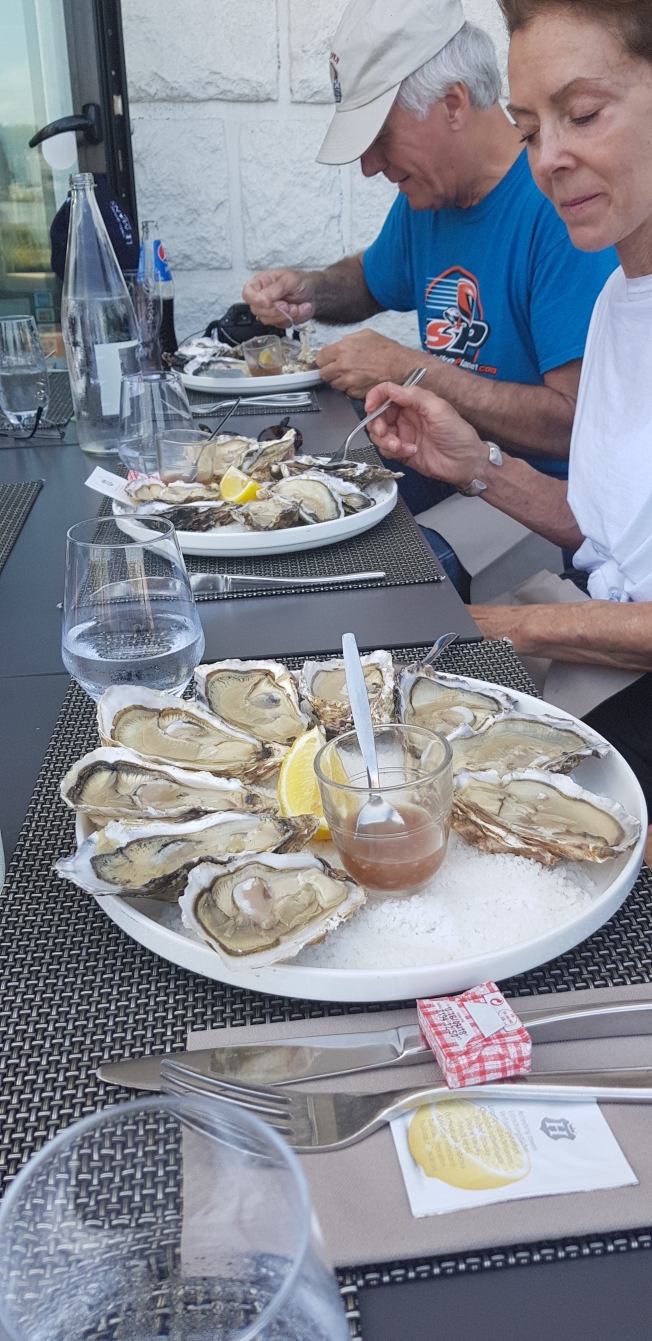
oyster time in the Le Skipper

Salt is harvested in the salt marshes around Guérande since the 9th century and still today all by hand. They harvest every day and depending on weather conditions the harvest may vary between 100 kg and 3 tons of salt per pond.
Only 300 tonnes of Fleur de Sel, the best, most luxurious and most expensive salt you can get, is harvested per year.

what can be better than an ice-cold boot beer at the end of a hot and long day riding?
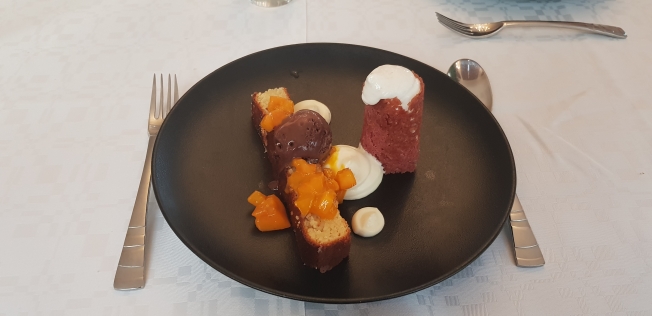

a sundowner on our privat Tumulus in Carnac
Day 3: Tours - Angers
The main attraction today is the race course of Le Mans. And we will ride the famouse "Musanne Straight" on our way to the museum.
Our day will end in Angers, the historical capital of Anjou. The old medieval centre is still dominated by the massive château, home of the Plantagenêt dynasty. It also houses the Apocalypse Tapestry, the biggest medieval tapestry ensemble in the world. It is 101 metres long, dates back to the late 14th century and illustrates the Book of Revelations. Angers is also the home of the world-famous orange liqueur, Cointreau. And we will have enough time to see it all.
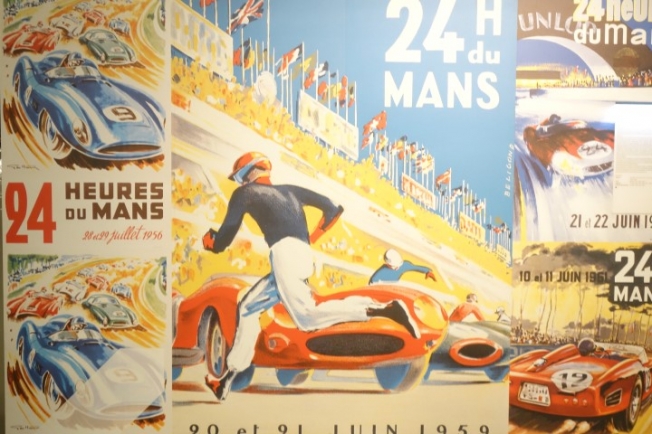
The 24 hours of Le Mans are one of the oldest and one of the most prestigious automobile races in the world. Held annually since 1923, the "Mother of Endurance Races" takes place partly on public roads (of course closed to the public during the event), while the permanent circuit, named "Circuit Bugatti" hosts other races like MotoGP and Formula One. One stretch of public roads, the "Mulsanne Straight", saw cars running at speeds of over 250 mph (400 km/h) before chicanes were introduced to bring down speed.
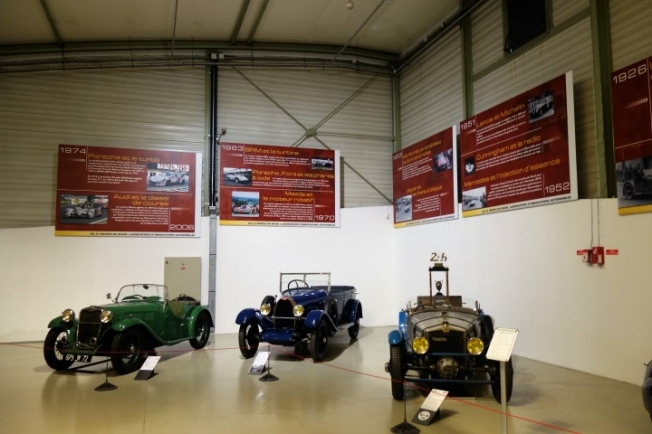
"Circuit des 24 Heures", that has been hosting motorsports events for more than 100 years. Here are some beginners
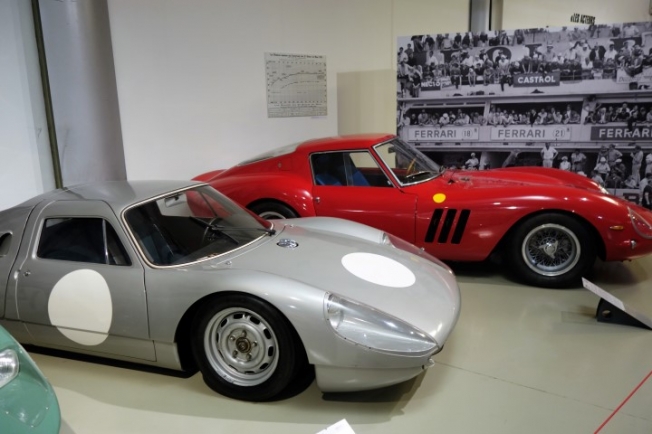
You can learn everything about this legendary track in the adjacent museum; it may also tell you why Porsche's sports cars have their ignition lock to the left of the steering wheel...
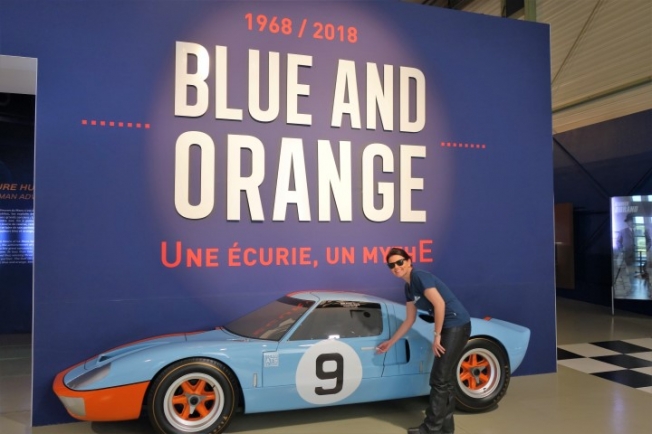
Carla needs a new car to drive the kids to school 
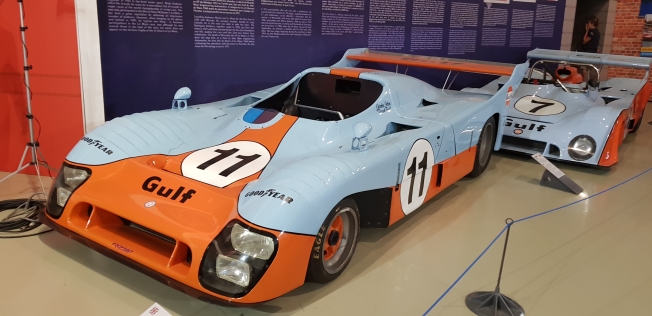
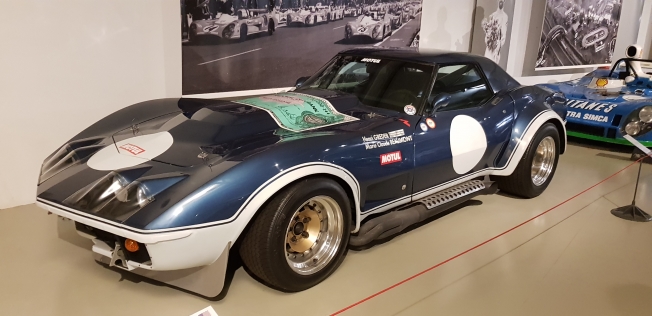

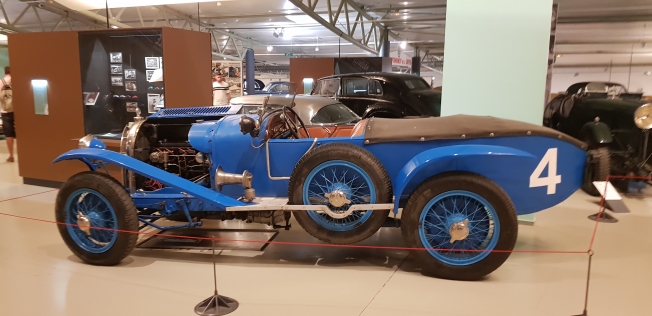
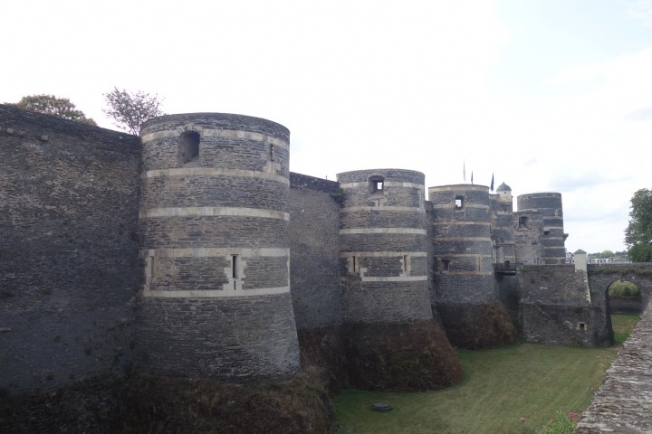
and not enough yet - the castle of Angers is calling
An intellectual centre in the 1400s and a lievely university city today, Angers! The historical seat of the Plantagenet dynasty and the dukes of Anjou - makes an engaging western gateway to the Loire Valley.
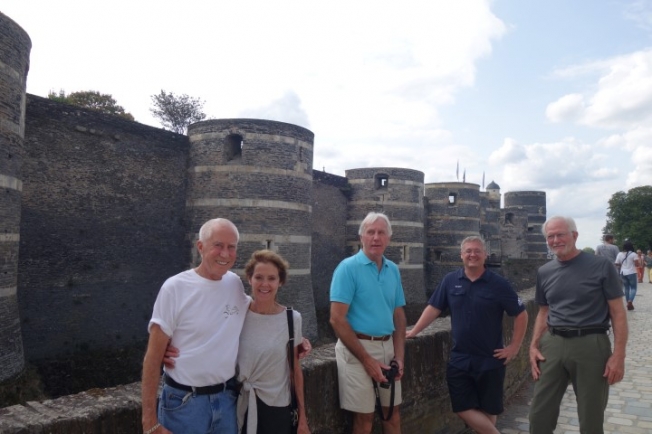
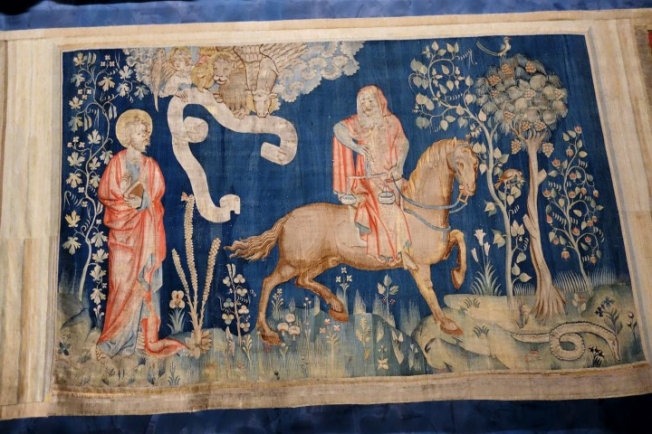
the Apocalypse Tapestry: the world`s largest Medieval tapestry, commissioned by Louis I in 1375
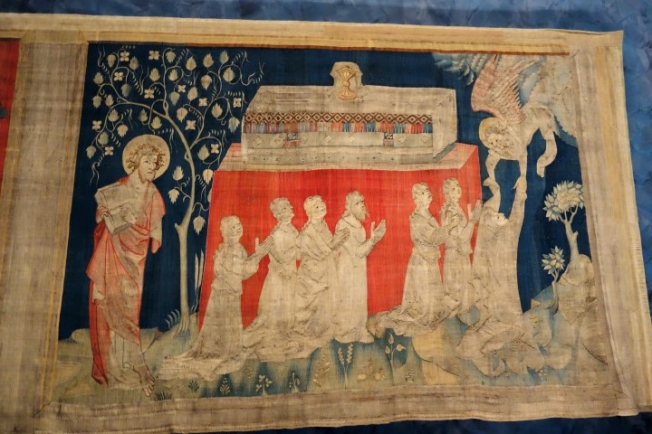
the 104m-long series of tapestries illustrate the story of the final battle between good and evil, as prophesiedin the Bible`s Book of Revelation
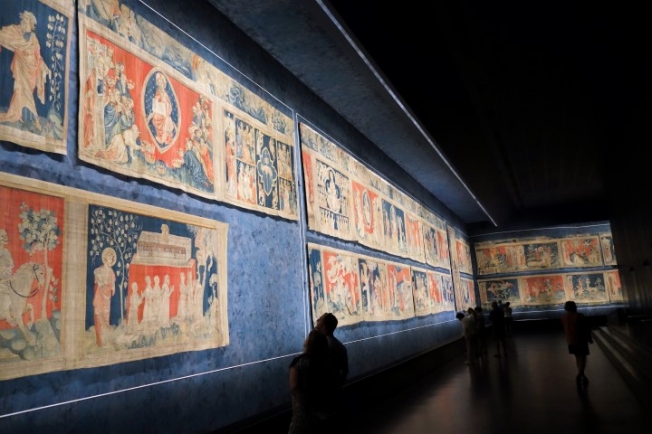
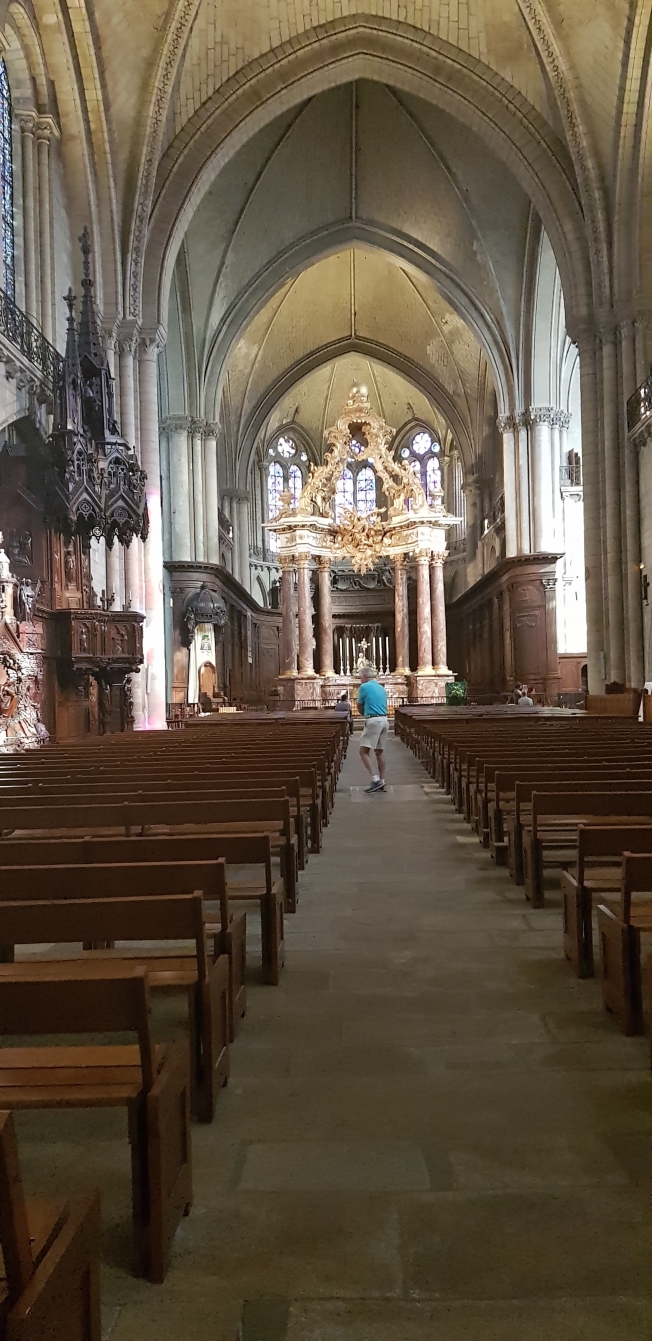

a well deserved sundowner
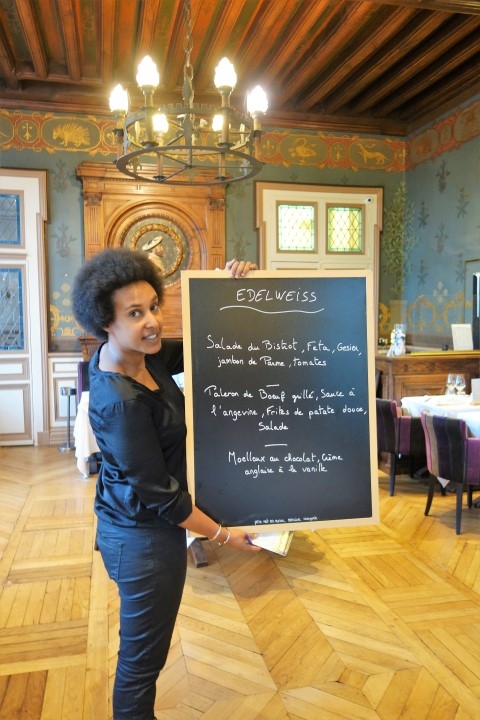
dinner is announced in the Best Western Hotel of Angers

... and it is kind of art too
Day 2: Versailles - Tours
It’s our first riding day and we dive straight into French history. We leave the hustle and bustle of the Paris metropolitan area behind us as we head south-west, to Chartres. Lonely Planet calls the city’s cathedral “one of the crowning architectural achievements of Western civilisation” and that is certainly true. It is a must-see for any visitor to France and therefore also for us. We won’t miss it!
Later in the day we reach the valley of the Loire river where countless castles are lined up like pearls on a string. Chambord is the biggest, most spectacular and most famous one and shouldn't be missed

the 17th century best preseved French Gothic Cathedral Notre-Dame was worth a visit
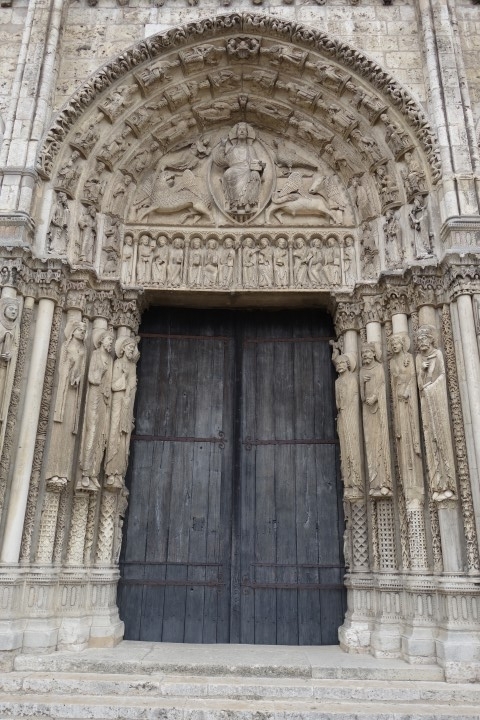
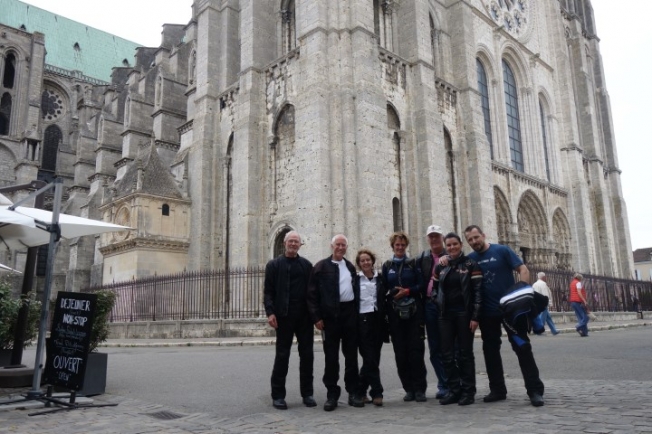
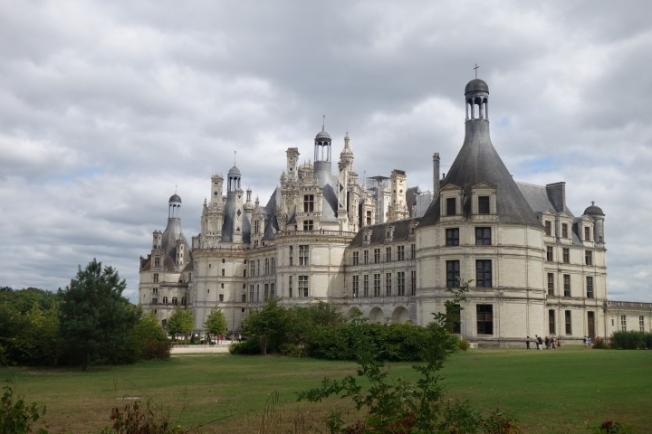
isn`t it a nice weekend hunting castle. It is the largest, grandest and most visited one. Francois I was the builder and owner. When it was ready he didn`t like it and spent only 42 days here.
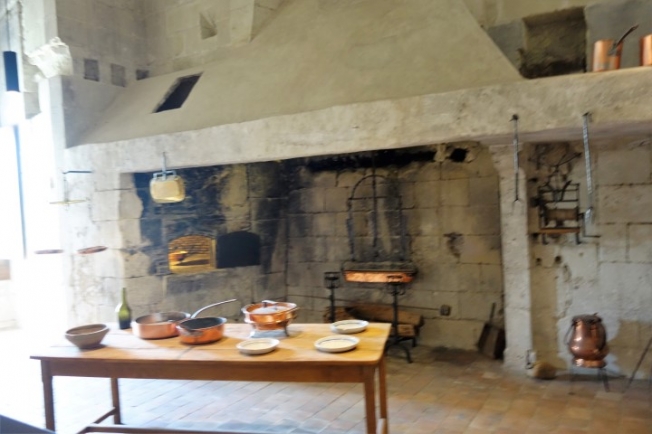
the citchen
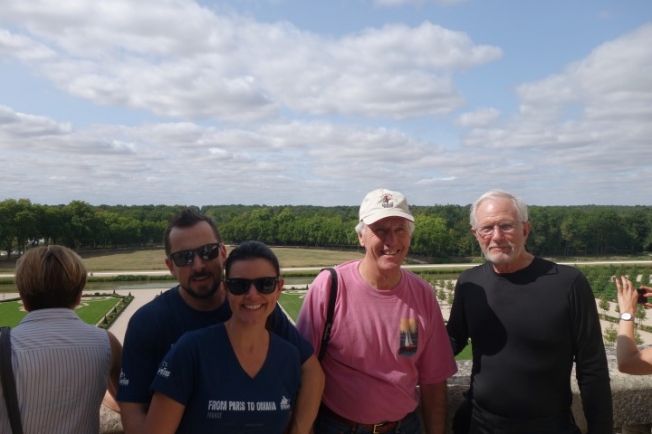
Sergio, Carla, Bob and Wayne
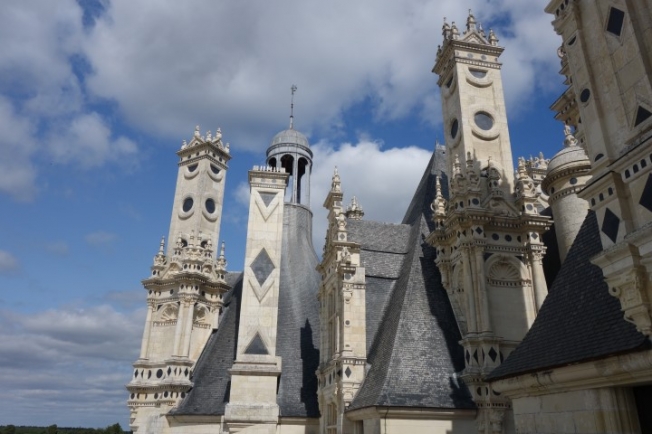
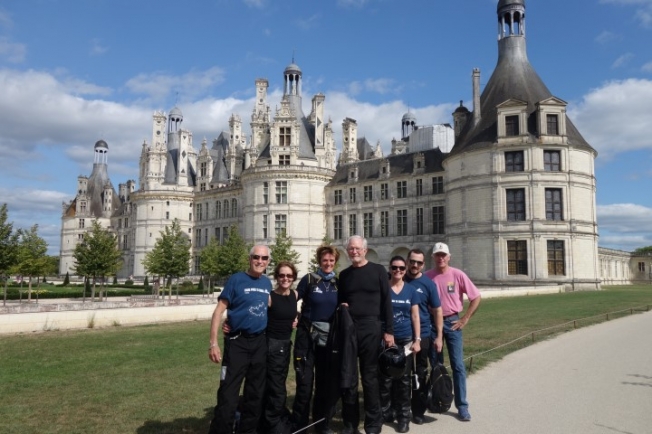
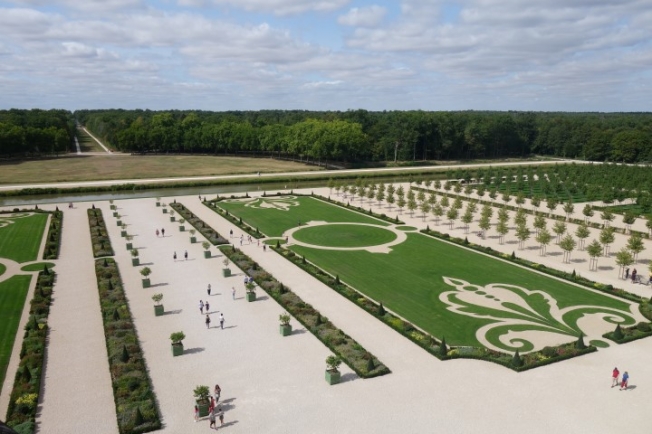
nice little garden in front
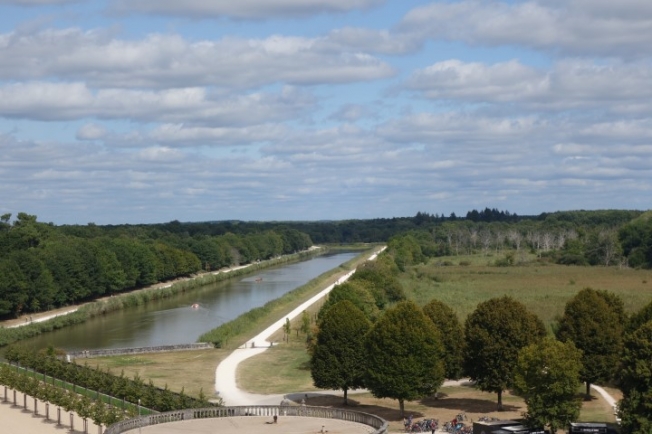
and here is the back yard
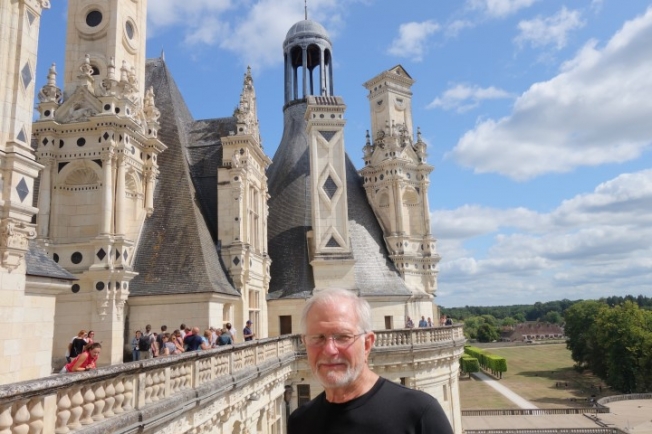
Wayne

this is the top of the double-helix staircase - for me difficult to understand. But we tried and it worked - 2 entrances on the same floor and while going up you can`t see each other.
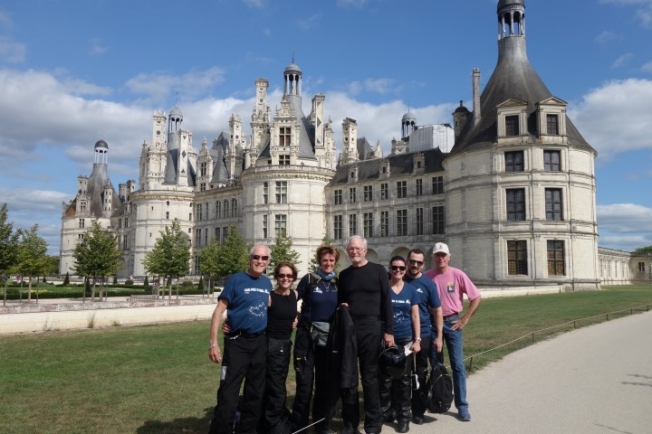
D 1: Guided City Tour Paris
Tour start is in Versailles. The splendid and enormous castle was built in the mid-17th century during the reign of Louis XIV - the Roi Soleil, the Sun King, to project the absolute power tof the French monarchy. Some impressions...
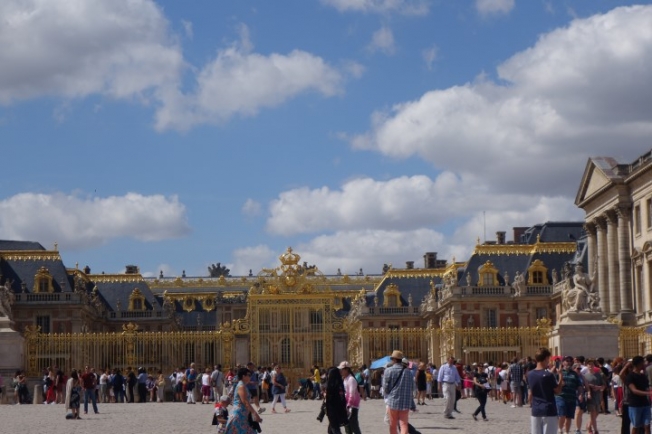
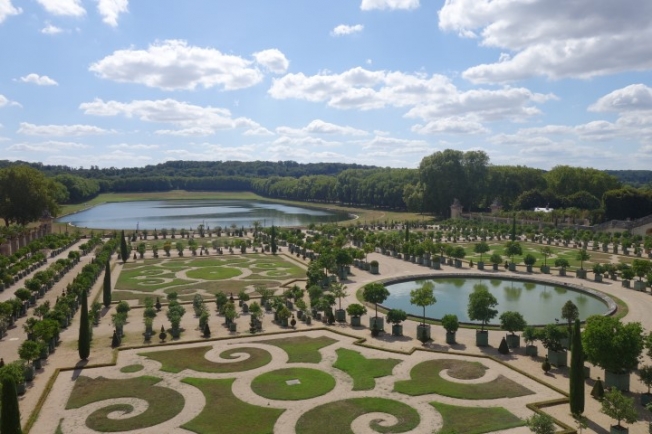
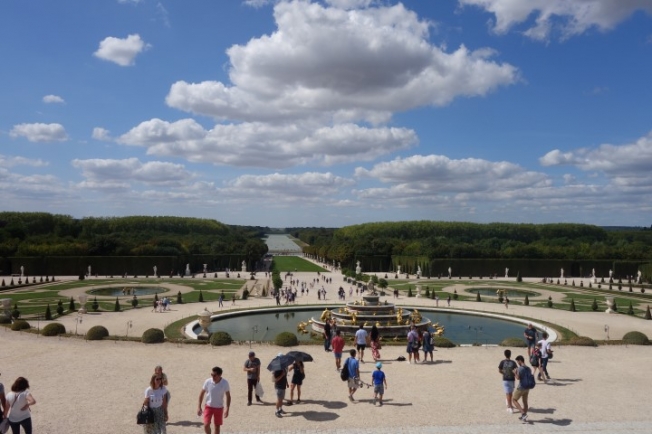
oriented to reflect the sunset, the Grand Canal, 1,6 km long and 62 m wide, is traversed by the 1 km long Petit Canal, creating a cross-saped body of water.

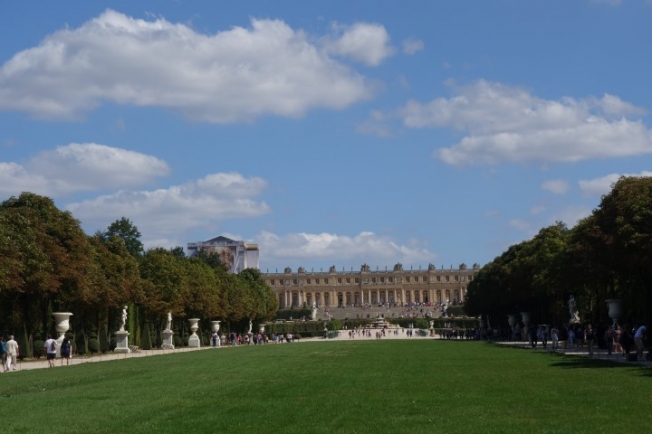
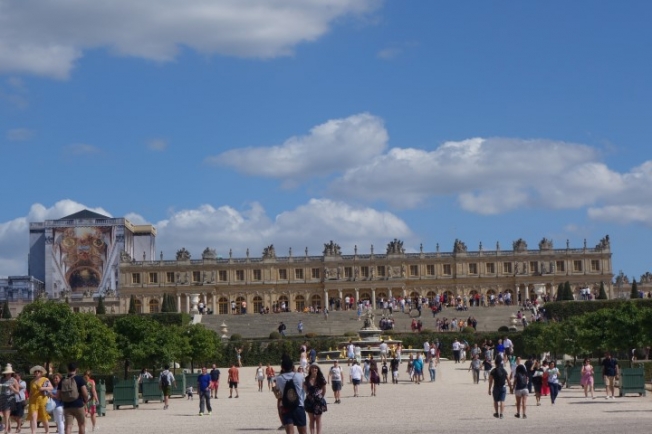
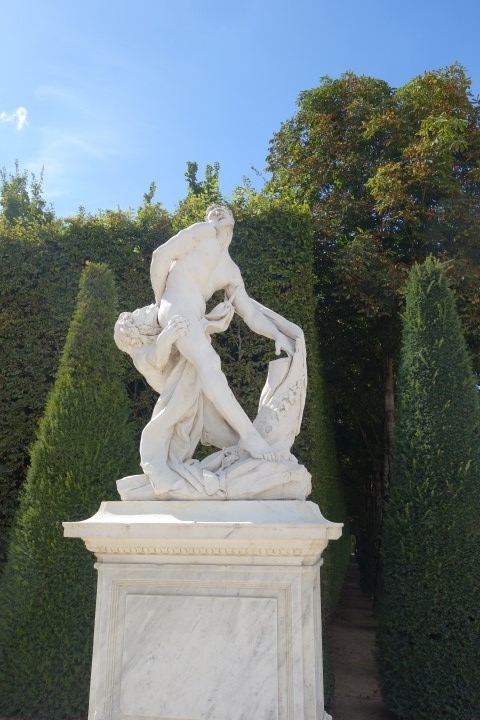
marble statues everywhere, the hedges a perfectly cut

Paris
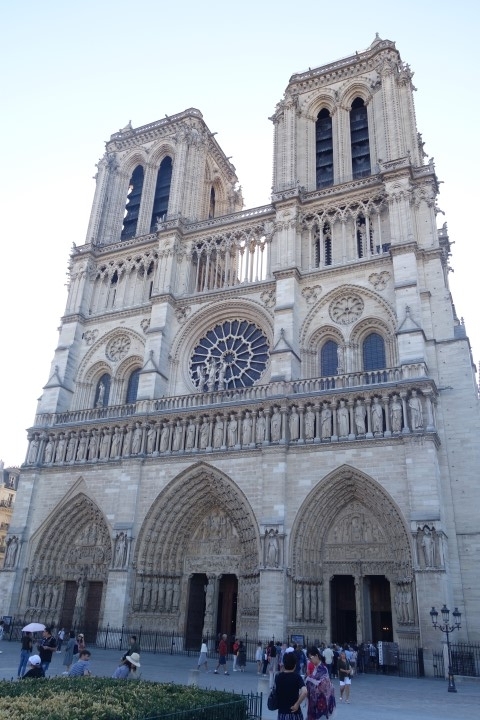
we started at Notre Dame, the most visited site in Paris, 14 million visitors per year. It is a masterpiece of French Gothic architecture, built in almost 200 years from 1163-1345. Its vast interior accommodates 6000 worshippers.

Napoleon self-crowned himself here
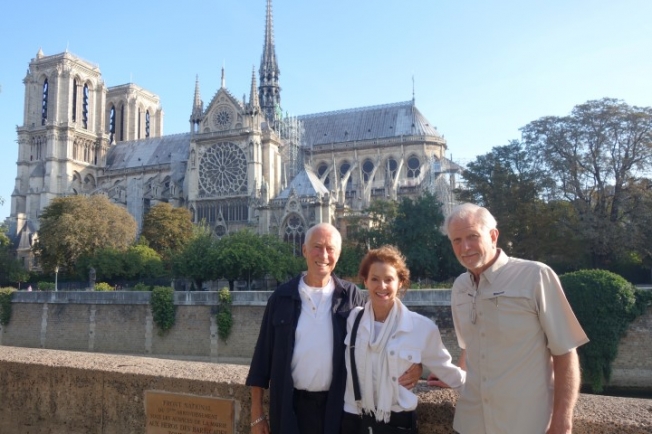
Tully, Nancy and Wayne were excited and very interested in history and culture. It was a pleasure to guide them
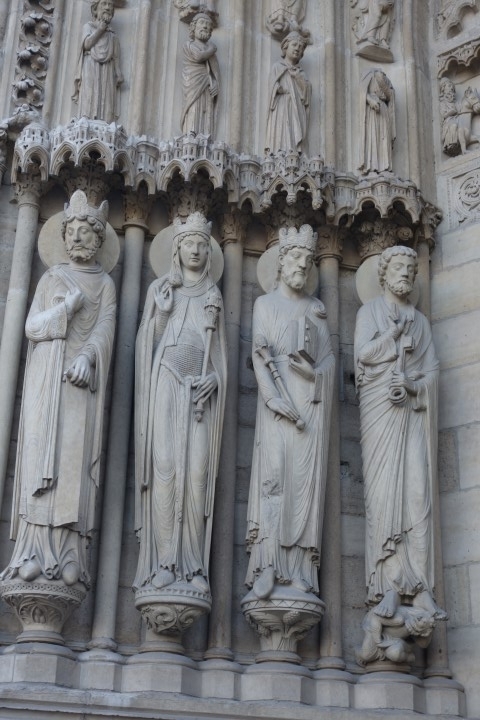
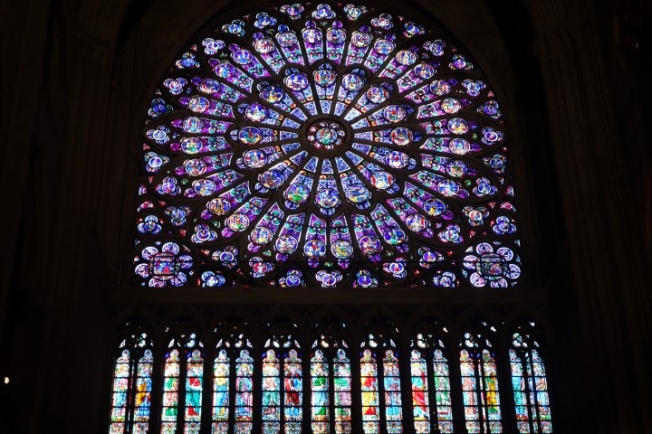
as we started early in the morning we had no queue and could enjoy the interior of the Cathedral
One of the beautiful rose blooms (1225-70) each almost 10 m in diameter
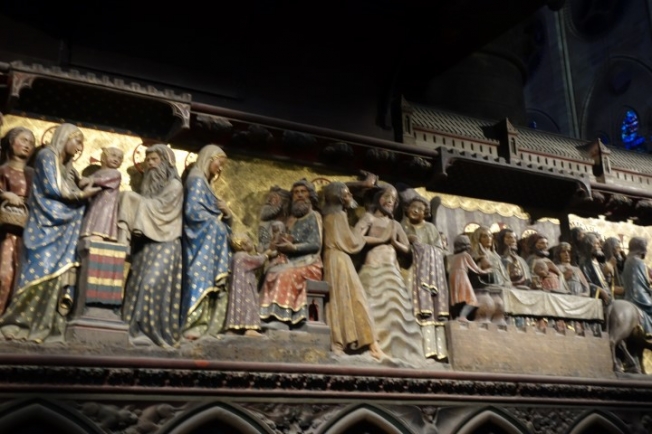
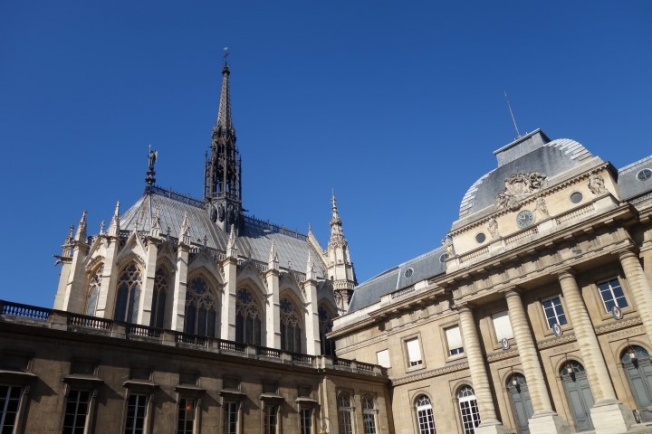
Sainte Chapelle
This gemlike Holy Chapel is Paris` most exquisite Gothic monument, built in just 6 years and consecrated in 1248.
The chapel was conceived by Louis IX to house his personal collection of holy relics, including the famous Holy Crown (now in Notre Dame)

15 m high windows tell the life ofhumanity according to the bible - Genesis to Apocalypses. Amazing craft work.
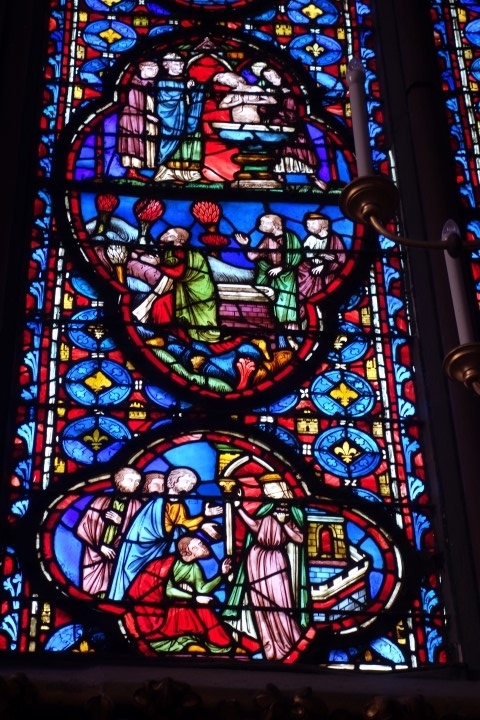

the gargoyles
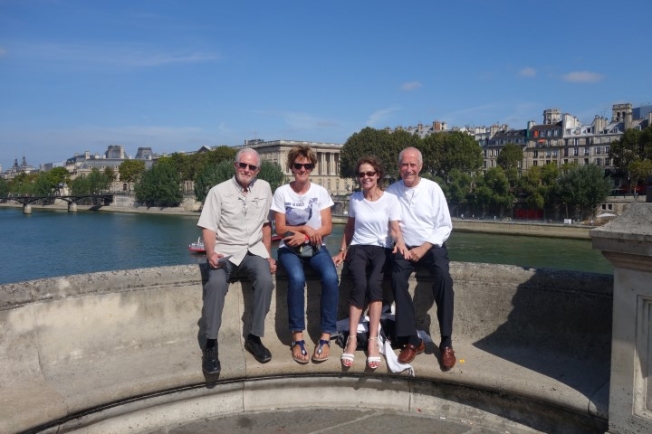
Pont Neuf (New Bridge) is the oldest bridge (1607) in Paris, the first one made from stone and the longest one. Paris has 37 bridges inside the ring road crossing the Seine.
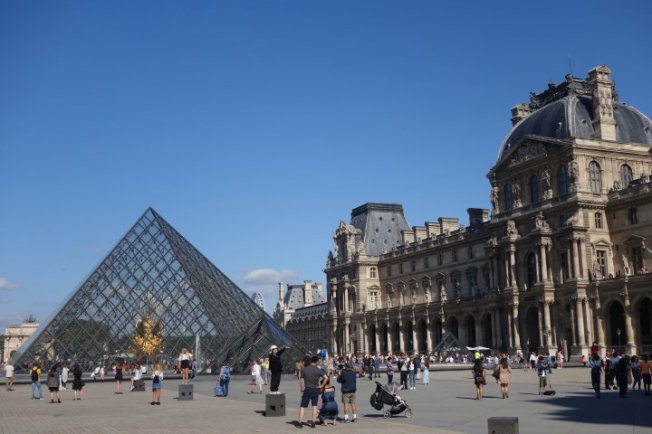
The Louvre
One of the world`s largest and most diverseMuseums. Showcasing 35.000 works of art by artist such as da Vinci, Michelangelo and Rembrandt.
The star attraction for many is Leonardo da Vinci`s Mona Lisa
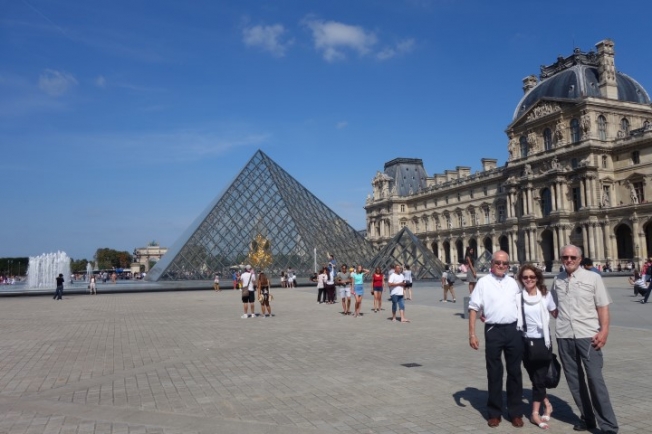
the main entrance is through the 21m-high Grande Pramide, a glas pyramid designed by the Chinese-born American architect IM Pei.

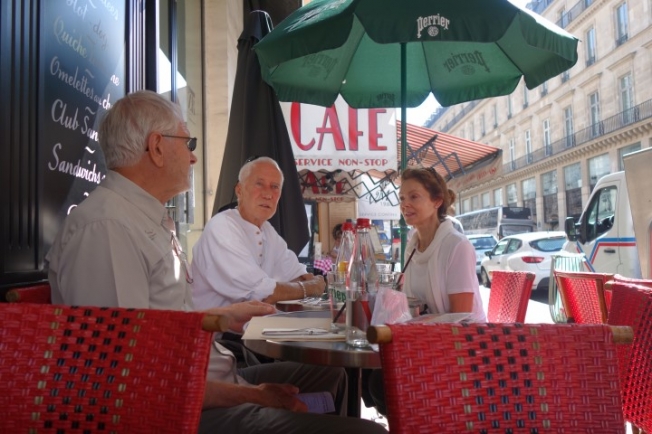
time for a rest, time for lunch in one of the French Bistros

a Tuk-tuk is a perfect vehicle to short-cut a bit - the Louvre in the background
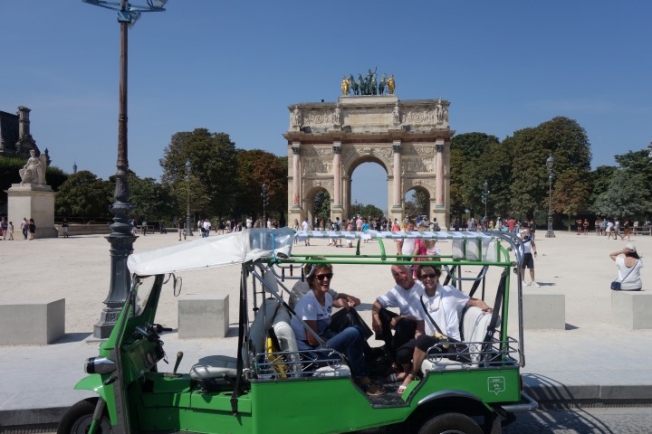
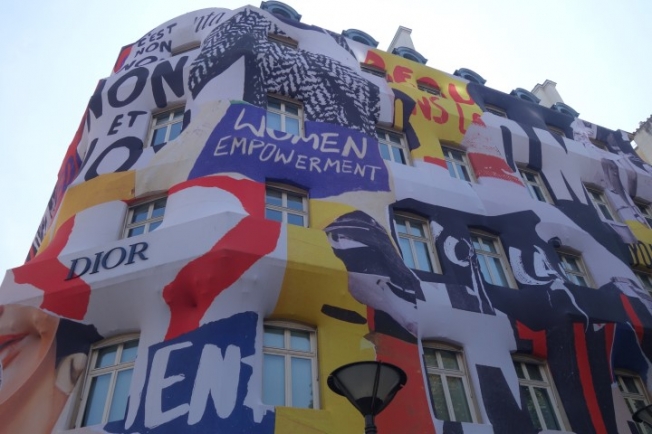
Avenue Montaigne - one of the first adresses in Paris when it comes to fashion. Pretty much every famous designer is located there.
Here the wrapped facade of Dior
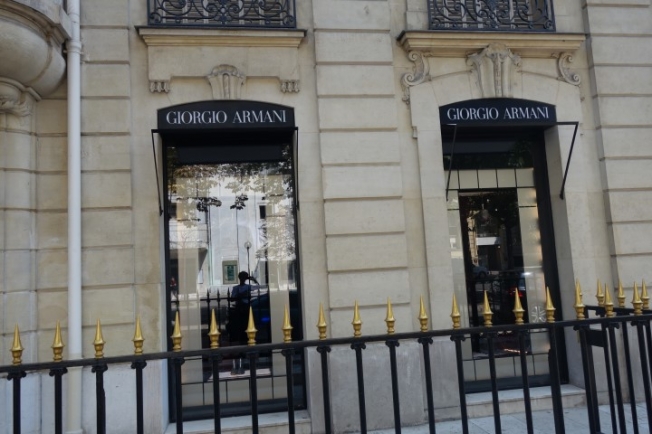
Giorgio Armani
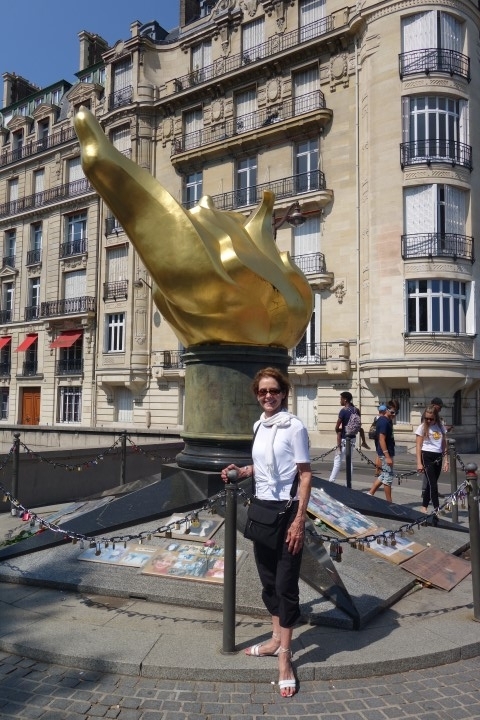
the Flame: a present from the US, placed on avenue de New York, on the west entrance to the tunnel where Lady Diana and Dodi Al-Fayed passed away in august 1997

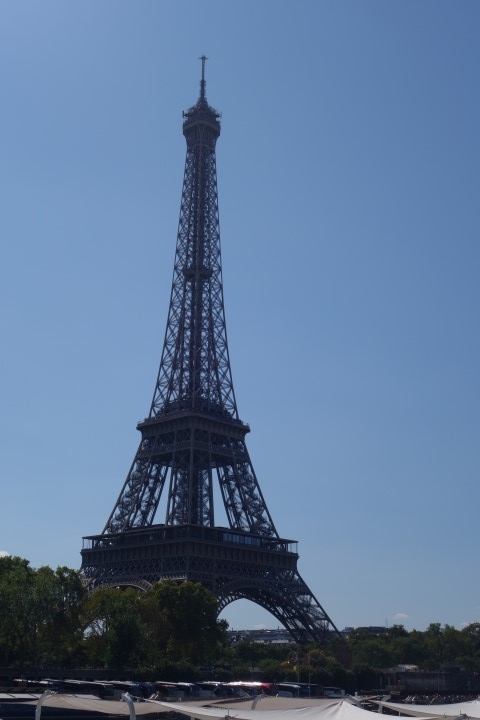

Eiffel Tower
no one could imagine Paris today without it. But Gustave Eiffel only constructed this elegant, 320 m-tall signature spire as a temporary exhibit for the 1889 World`s Fair. Luckily, the art nouveau tower`s popularity asured its survival.







































































































































